From Young Flowers to Midnight Sun | Peer Frost | Interview
Peer Frost is a Danish musician known for his work with Young Flowers, Rainbow Band, and Midnight Sun. Frost’s versatility allowed him to play across different genres, from rock to jazz, leaving a significant mark on Danish music history.
His musical journey has taken him through a diverse range of bands, each contributing to his eclectic style. He cut his teeth with Les Rivals, a group renowned for its gritty garage rock and raw energy. With Young Flowers, he explored psychedelic rock, delving into more experimental soundscapes. His work with Rainbow Band and Midnight Sun showcased his versatility, moving into progressive rock and improvisational territory. Additionally, his time with Savage Rose added a touch of soulful depth to his repertoire, reinforcing his status as a multifaceted musician.
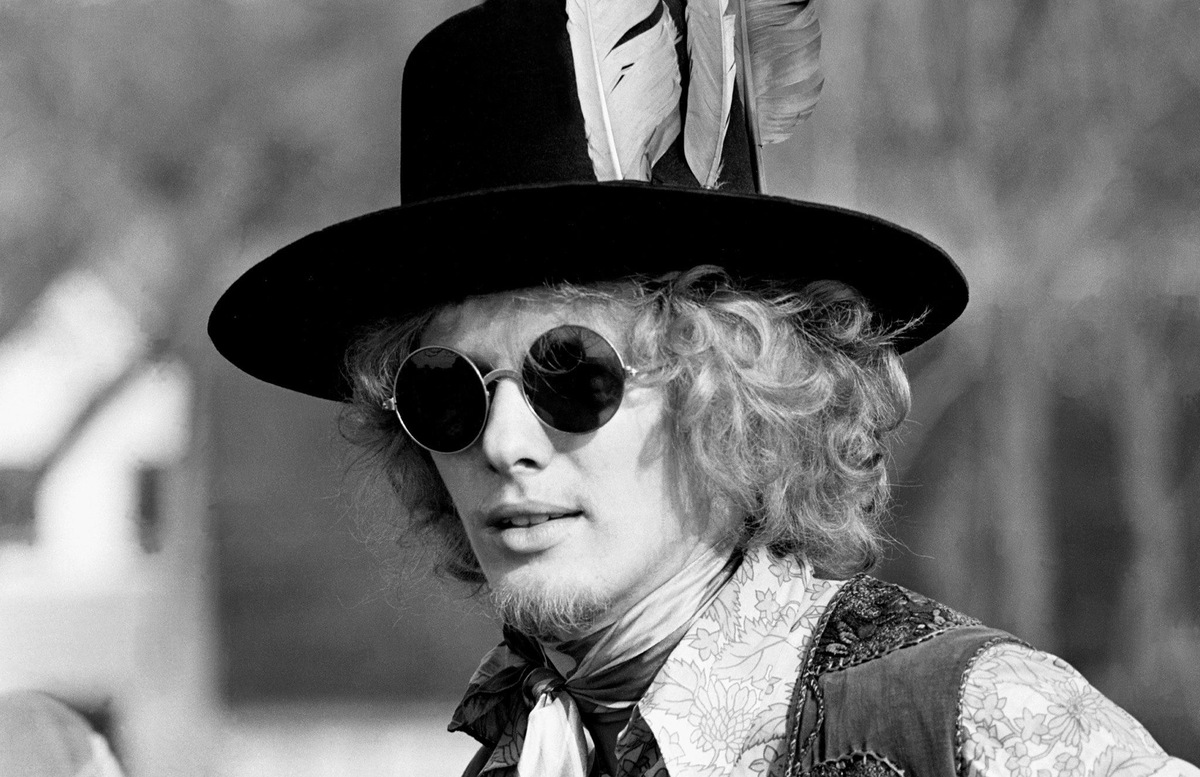
“We were the support act for several big names, including Cream, Ten Years After, Rory Gallagher & Taste…”
Would you like to talk about your upbringing? Where did you grow up?
Peer Frost: I was born in 1948 in Copenhagen. Some of us grew up in a part of Copenhagen called Hvidovre, while others grew up in different parts of Denmark.
What was it like growing up in Denmark? Tell us about daily life during your teenage years.
Peer Frost: Growing up in Denmark was quite pleasant, safe, and peaceful. People were generally happy, and many had stable jobs. Optimism was widespread. However, if you weren’t interested in sports, there wasn’t much to do as a teenager.
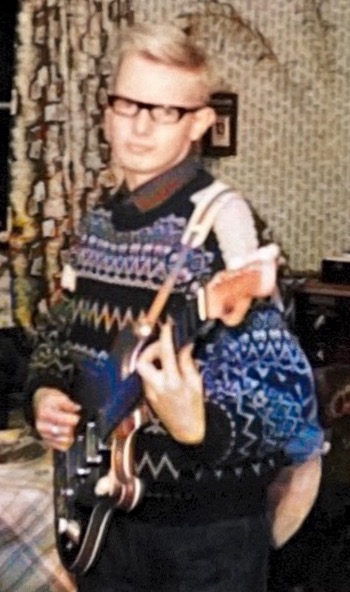
Was there a specific moment when you knew you wanted to become a musician? When did you first pick up an instrument?
Yes! In 1961, when I first heard Hank Marvin and The Shadows playing ‘Apache,’ I thought to myself, “I want to do that!”
My mother was 18 years old when she moved from Sweden to Denmark to work as a housemaid for a Swedish woman married to a Danish man. I was an only child living alone with my mother, and I never knew my father. Since all of our family lived in Sweden, I spent a lot of time alone. To keep me busy, my mother enrolled me in dance lessons and private tutoring for playing the recorder. This continued for about five years.
One day, the organist from our local church came to my school to talk about his plans for starting a boys’ choir. Some of us auditioned and were accepted into the choir. I sang in the choir until my voice began to change. In 1960, when I was 12 years old, my big dream was to get a clarinet and play in a Dixieland jazz band. But my mother had other ideas and said, “I’ve heard of this young man in America, Elvis Presley. He plays the guitar. Could this be something you’d like?” I said, “Yes, please!” I received an acoustic jazz guitar for my birthday and played it until I got blisters on my fingers, causing me to hang it on the wall.
The following year, I heard ‘Apache,’ and that’s when the guitar came down from the wall again.
Did you go to college?
No, I didn’t. When I was just 15 years old, I got a gig with “Les Rivals” to play every night for six months at a theater in Copenhagen. This made me drop out of school. At that point, I knew that music was my life.
How did Les Rivals come about? You were often called the Danish Beatles…
After hearing The Shadows, I begged my mother for an electric guitar, which really motivated me to learn how to play properly. One day in 1962, a boy my age from the same school as me—not in my class, but in the same year—told me, “I live close to you and I play the drums. I also know two guys in Copenhagen who play guitar (Henrik Hviid Carlsen) and bass (Flemming Preisler). Why don’t we start a band?” I thought it was a great idea.
The eldest daughter of our next-door neighbor was married to the caretaker at the school near my home, so I asked him if we could use a room to rehearse in the evenings. He allowed us to use the school’s boiler room. We had to be ready to play when the boiler went quiet because it was so noisy that we couldn’t hear our instruments otherwise!
In 1963, Bjørn, our drummer, said, “My parents will give me a bass drum for my confirmation party (he didn’t have one at the time) if we play at the party.” Suddenly, it got serious. We needed better amplifiers and matching guitars, or it wouldn’t work! We also needed a singer (Per “Kreller” Frederiksen) and a band name.
One of the songs we played was ‘Foot Tapper,’ so we called the band “The Foot Tappers.” The party went well, and we were ready to take on the world.
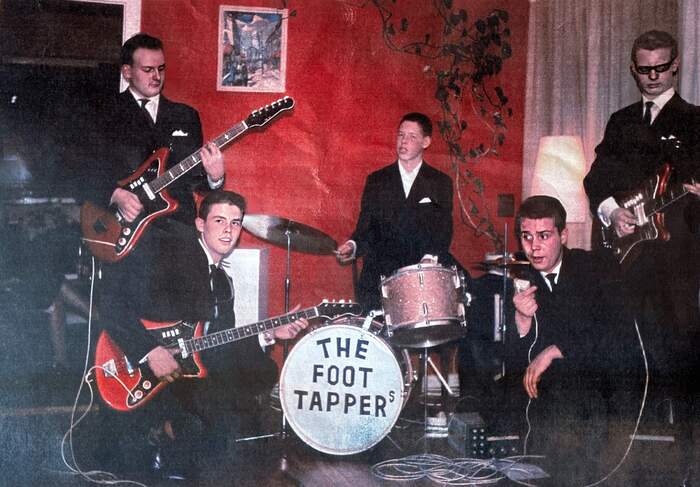
That summer, every Wednesday night, there was an event with “old-fashioned” rock ‘n’ roll music in Enghaveparken in Copenhagen. I was there every week, and one day I asked the host if we could play during the breaks. He agreed, which was fantastic because it gave us the experience of playing in front of a larger audience.
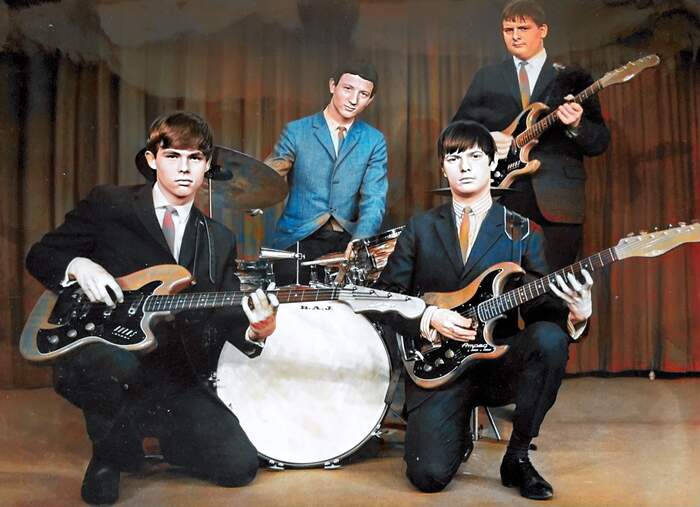
We soon realized that we needed to change our name to avoid being seen as just a “Shadows copy band.” With the British invasion—“The Beatles,” “The Rolling Stones,” and others—just starting, we decided to set ourselves apart by calling the band “Les Rivals.”
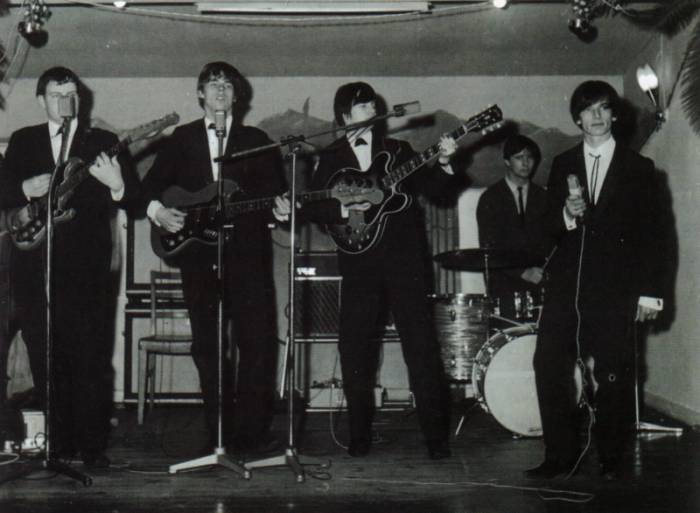
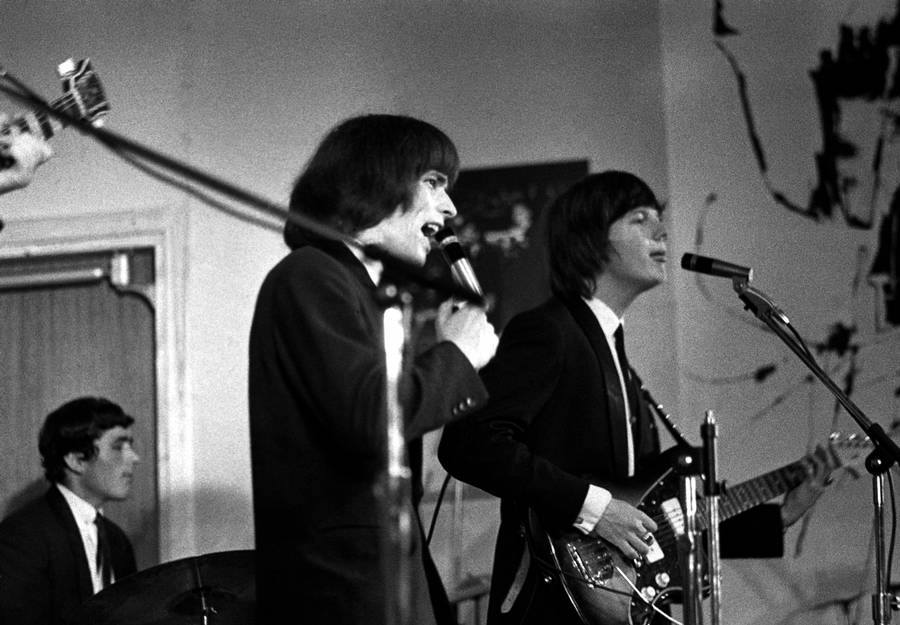
One evening, the host from Enghaveparken called and told us to hurry to a revue theater because the manager wanted us to audition. He was pleased, and we landed a six-month contract to accompany various performers. We were also allowed to play one song of our choosing every night. We performed one show on weekdays and twice on weekends.
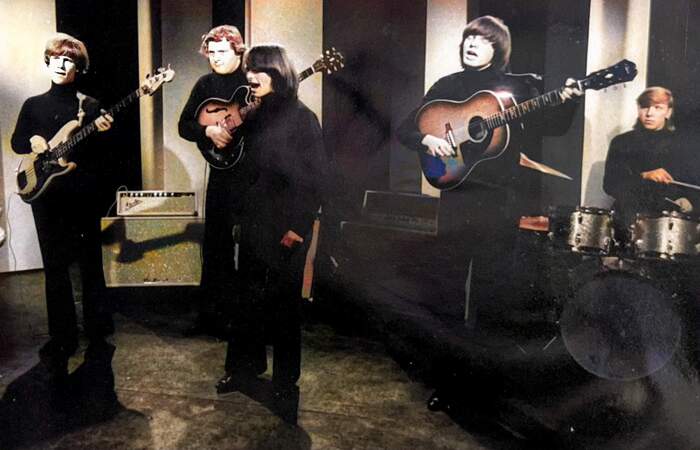
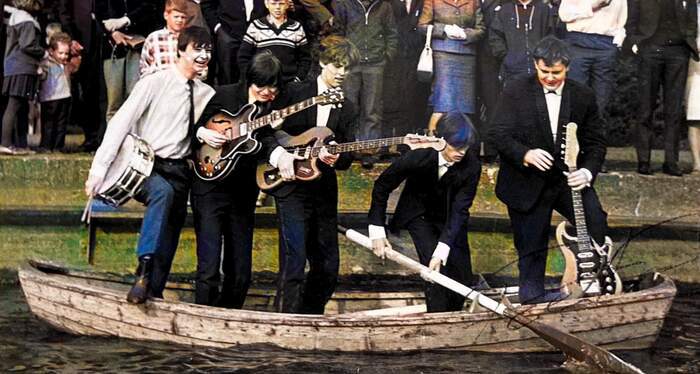
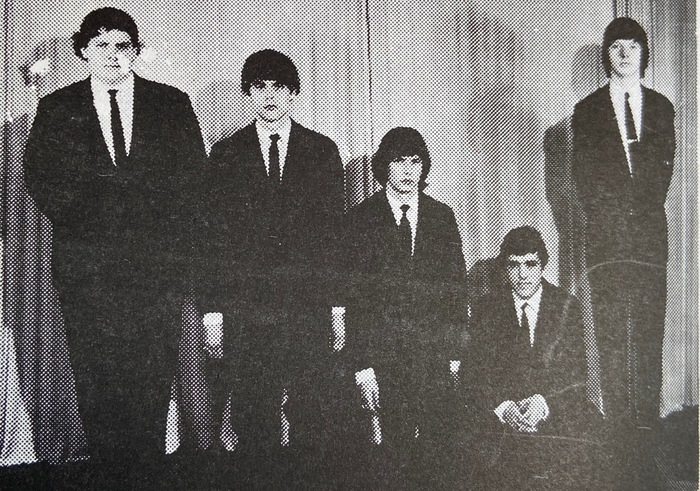
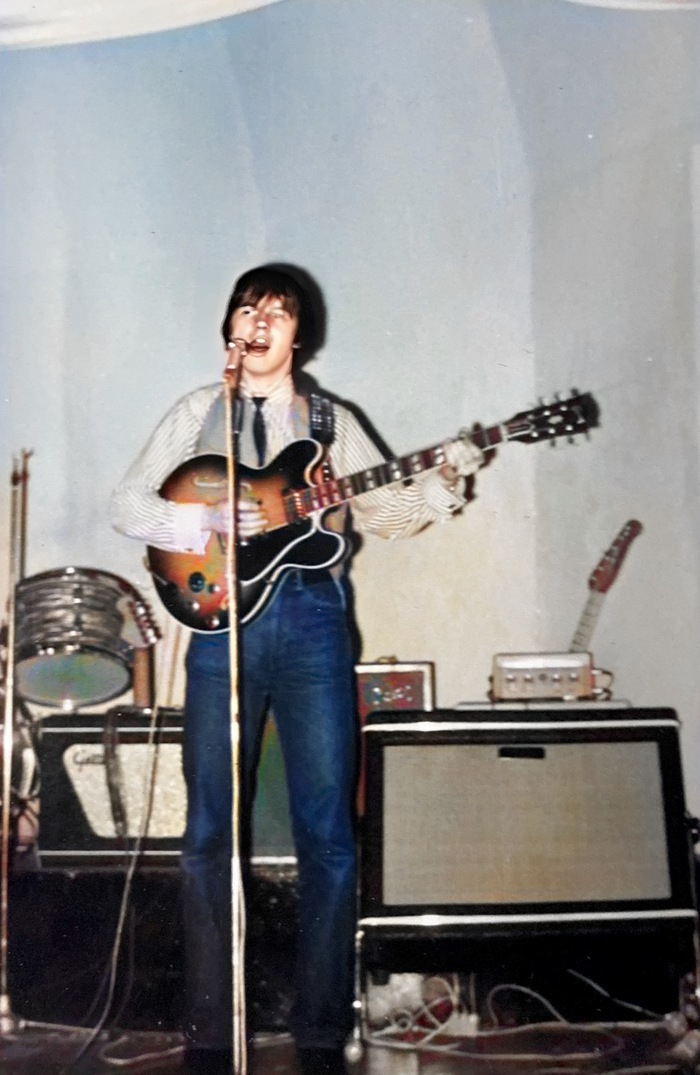
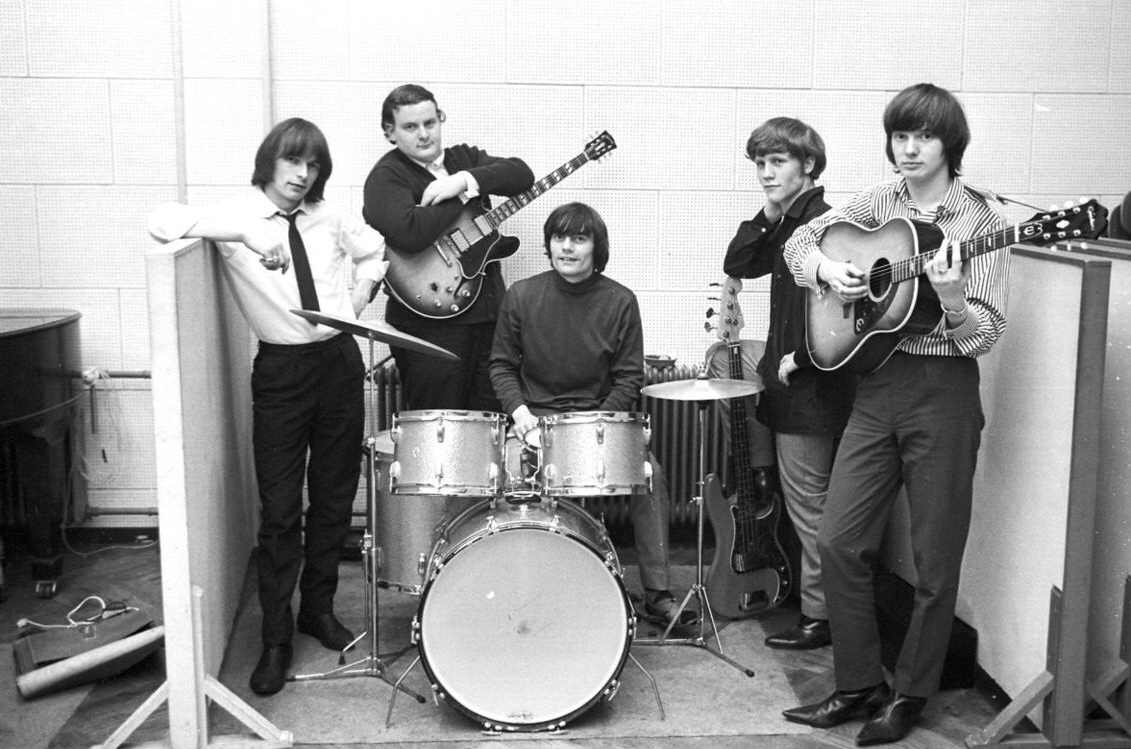
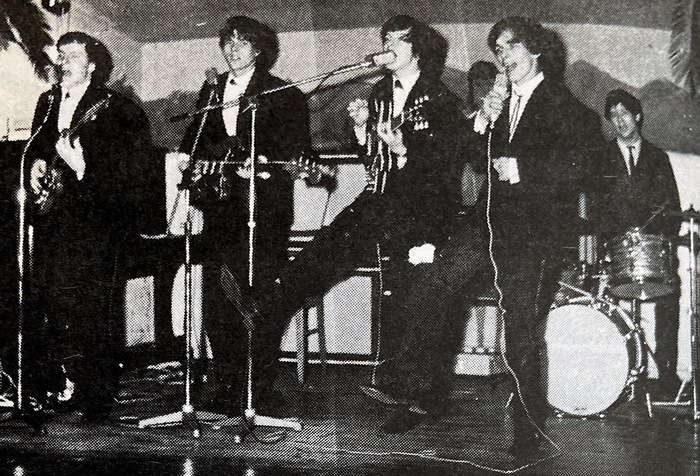
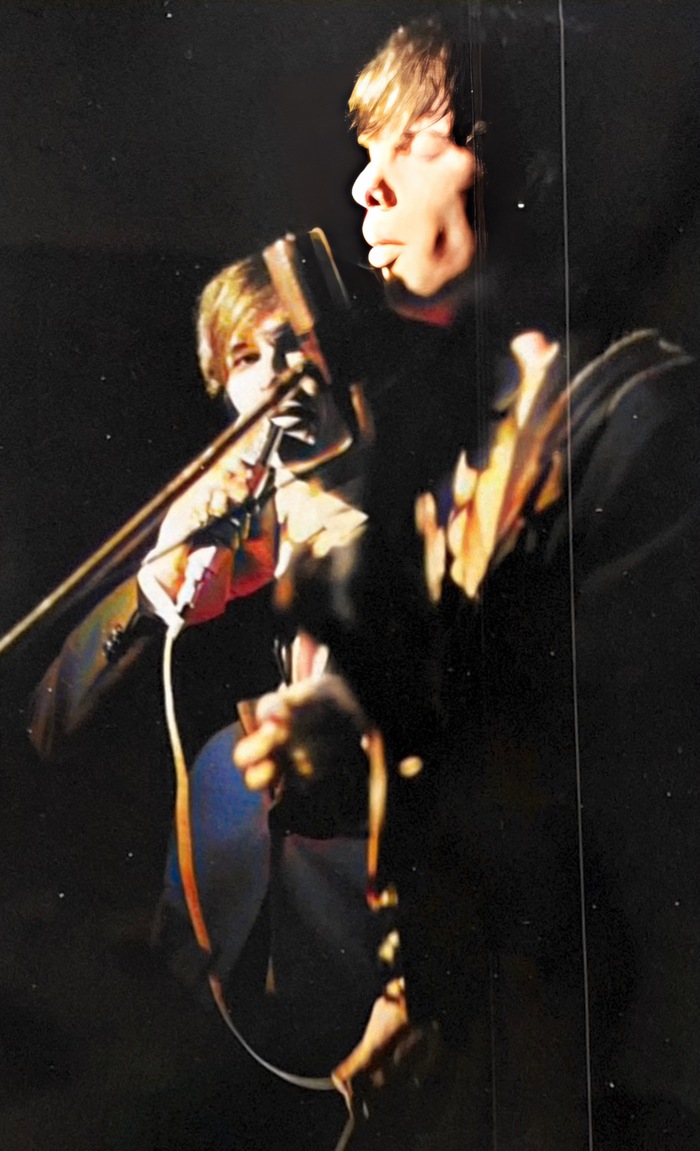
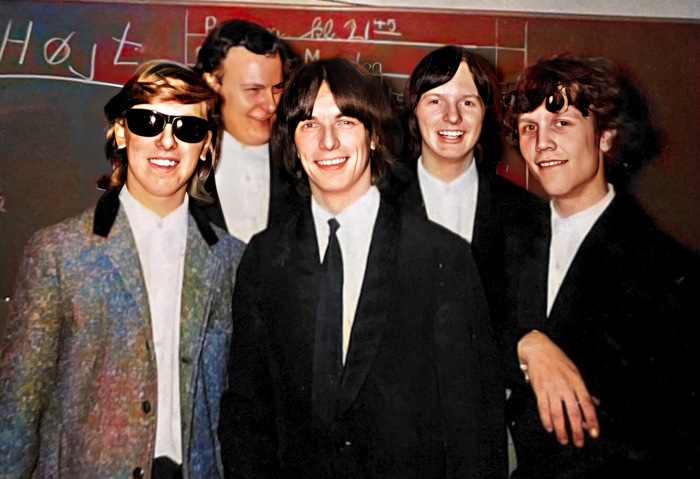
Given the hype around The Beatles, the theater manager thought it would be fun if I dyed my blond hair brown and grew “Beatles hair.” This led him to call us “The Danish Beatles.”
Bjørn, our drummer, was an apprentice and couldn’t play every night, so we got a new drummer, Bjarne Arendal, to fill in until he had to join the military. Years later, Bjørn formed “Gasolin,” which became Denmark’s most famous rock band.
One night, after a show, a gentleman approached us and said he had bought a large restaurant at “Dyrehavsbakken,” a big amusement park outside Copenhagen. He needed live pop and rock music for teenagers. The place was called “Place Pigalle,” and it was set to open from the last week of April to August 31, 1964. We signed a contract for the season, playing 6 hours every weekday and 8 hours on weekends, taking turns with another band, playing 30 minutes at a time.
One of the other bands was called “Dandy Swingers,” with lead singer Anisette. Another was “Sir Henry and his Butlers.”
There were several lineup changes back in the early ’60s… Which lineup was the most consistent?
Peter Belli (vocal), Bent Glæsel (drums), Per-Oluf “Flob” Hansen (bass), Henrik Hviid Carlsen (guitar), and I (guitar).
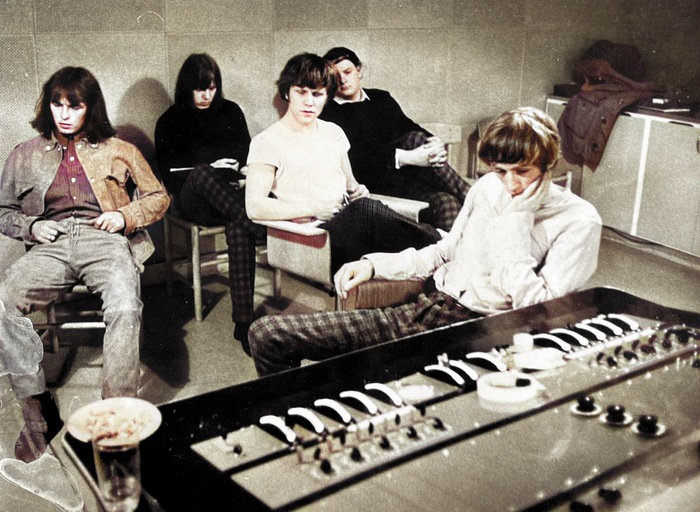
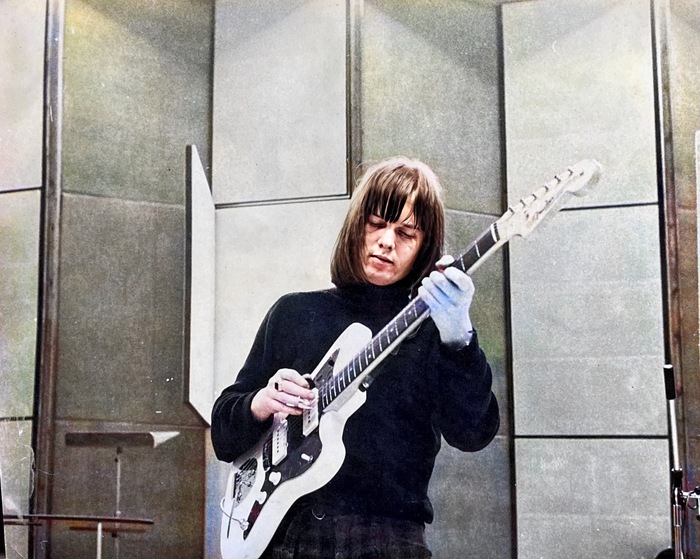
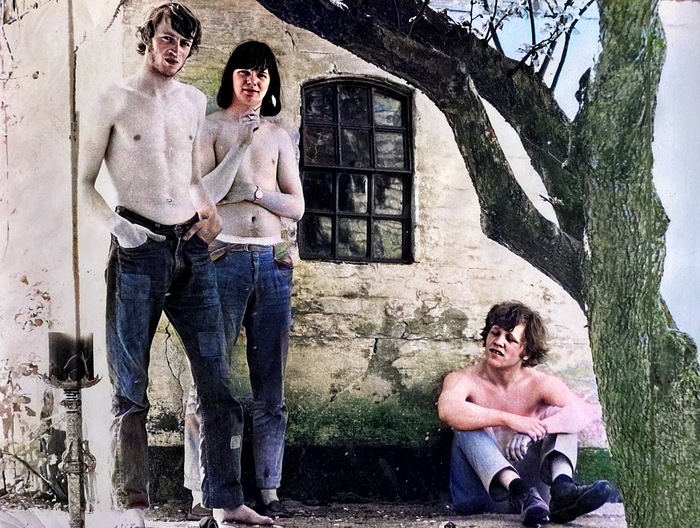
How did you originally meet Peter Belli, and how did your collaboration start?
We started at Place Pigalle with a new lineup: Erik (vocal) and Knud “Denger” (drums). This quickly became a success, with 200-300 guests and sometimes as many as 500 guests per day.
One day in June, a gentleman invited us to perform at his small dance restaurant in a town called Ribe, about 300 kilometers from Copenhagen, for two weeks, starting just two days later. After playing in Copenhagen every day for seven months without a break, this seemed like a great opportunity. It was also our first time playing outside of Copenhagen, so we accepted without hesitation.
Then panic set in: we had to get two weeks off from Place Pigalle, and our singer Erik couldn’t come because of his apprenticeship. The manager at Place Pigalle agreed, but now we needed a new singer. A guy in the audience suggested a singer he knew, Peter Belli, who lived in Hvidovre and was available. We visited Peter, who had heard us at Place Pigalle, and he agreed to join us.
The next day, we picked him up in a rented car and drove to Ribe. None of us had heard him sing, nor did we know what songs he could perform. We discussed everything in the car on the way there. Fortunately, he was experienced, and we made a list of songs he and we both knew.
Our next challenge was his Elvis Presley hairstyle, which was a no-go for our group. I washed his hair, gave him a trim, and combed it down his forehead at the hotel to make him look like the rest of us. The adult audience at the venue was shocked by our music. Since this was in the countryside, they had never experienced anything like it. After two days, the adult audience stayed at home and was replaced by a new crowd of teenagers.
We returned to Place Pigalle with Peter Belli as our singer. He was a brilliant singer and a great entertainer, quickly becoming very popular. After a while, Flemming Preisler left to complete his education and was replaced by Per-Oluf “Flob” Hansen on bass.
That summer, the manager of an advertising agency returned from a holiday in London, where he visited an old theater converted into a concert venue for teenagers. The place was packed, and he came up with the idea to create something similar in Copenhagen. He rented an empty theater and set it up for music, calling it “Hit House,” a non-alcoholic music club with low-priced tickets. Hit House opened on September 1, 1964.
The day after Place Pigalle closed for the season, all our fans came to the opening night of Hit House. The audience, however, was not happy with the scheduled Shadows cover band and started chanting for “Peter Belli & Les Rivals.” This continued throughout the night, prompting the manager to call us the next day, begging us to play. We signed a two-year contract with Hit House, following the same pattern as Place Pigalle, alternating with other bands like “Sir Henry & His Butlers,” “The Hitmakers,” “The Lions,” “The Defenders” (with Ken Gudman on drums), and many others. Hit House became almost like a second home for us, attracting 700-800 people almost every day. We played at Hit House on weekdays and toured around Denmark on weekends.
Over time, our lineup changed. Our drummer quit and was replaced by Niels Kjær. As Peter Belli became a well-known name in Denmark, we signed with a booking agency, allowing us to play around 300 concerts a year, tour in Finland, and even perform twice in Scotland. We also recorded albums and appeared in a TV film.
These were turbulent years for Les Rivals. We had three vocalists, four bass players, and seven drummers during our run. Only Henrik Carlsen and I were there from the beginning to the end.
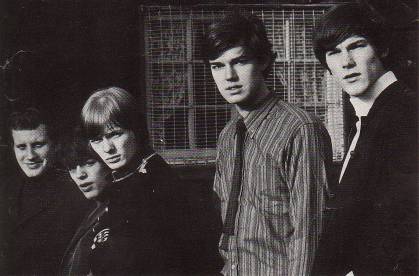
What led to the formation of Young Flowers, and how did you originally meet other members of the band? When did you join them?
The formation of the band occurred about six months before I joined, but here’s what I know about its origins:
Drummer Ken Gudman was inspired to form a trio after listening to an album by the English band Cream. In the summer of 1967, he asked guitarist Jens Dahl, with whom he’d played for four years in “The Defenders,” and bassist Peter Ingemann if they would like to join him in this new project—they agreed.
Their first concert was on the 10th of September, as a support act for the English band Traffic. Later, they released a single in December 1967.
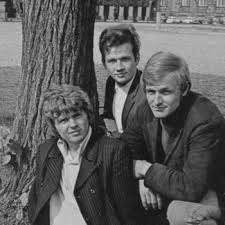
I knew both Ken and Jens from our Hit House days, and I had also met Peter Ingemann when he joined “Peter Belli & Seven Sounds” in the winter of 1966. Peter had a small apartment in the same building as my friend Bjørn Uglebjerg, which is where I got to know him.
In the summer of 1967, I went on a short three-day tour with Sir Henry and a Norwegian band called “The Beatnicks.” We hit it off, and they liked my playing style. They invited me to join them, and I said, “Why not?”
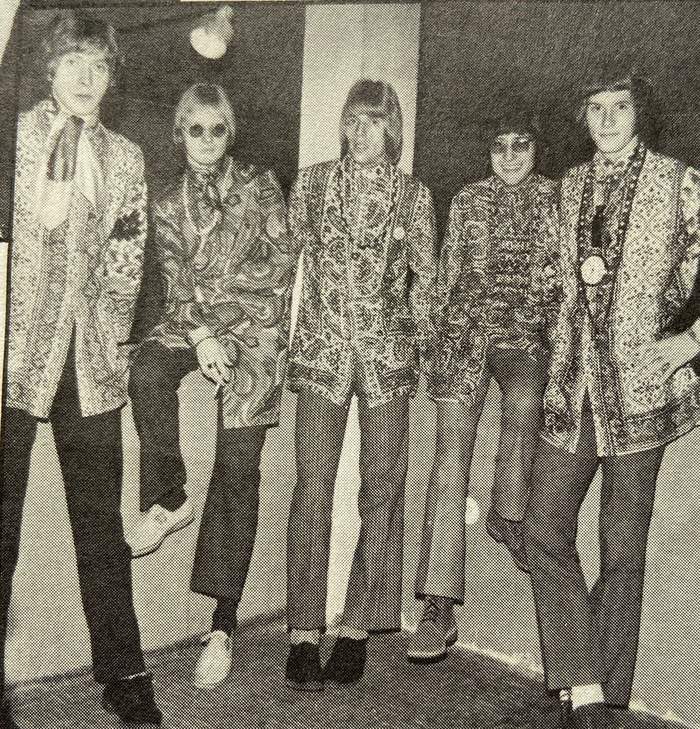
On the third day of the tour, I told the members of Sir Henry, “Thanks for the collaboration, but the party is over—I’m moving to Norway.” Over the next six months, I toured with “The Beatnicks” in Norway, Sweden, and Denmark, and we also recorded a single.
However, by December, I decided to return to Denmark for the Christmas holidays. The singer and drummer from “The Beatnicks” were planning to move to France or Italy to start a new band. Since I missed Denmark, I told them, “Go ahead, I’ll be heading home.”
Kjell and Truls went to France to form the band “Titanic,” while I returned to Copenhagen in mid-December. On the day I arrived, I visited Bjørn, and that’s when I met Peter Ingemann again. He greeted me with, “We have a huge problem—please help us! Jens has left Young Flowers, and we have a week-long tour starting in a fortnight, on the 26th of December, along with other gigs.” I agreed to help, saying, “We’d better start rehearsing immediately.”
It was fortunate that the only album I brought with me to Norway was Cream’s ‘Disraeli Gears’. I had listened to it repeatedly, so I was familiar with the concept of a trio.
Unfortunately, Jens suffered from stage fright and mental health issues, which prevented him from returning to the stage.
The day after meeting Peter, Ken, Peter, and I moved to an empty farm in the countryside, owned by Peter’s father, where we practiced constantly. Our first concert together was at Gladsaxe Teen Club on the 26th of December 1967. It went well, and we’re still going strong.
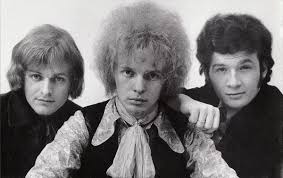
What was your overall vision for the band back then?
We wanted to avoid being labeled a “Cream copy band.” That’s why we focused on writing our own songs and developing our own unique style.
Peter came from the jazz scene, where long, improvised solos were common. He encouraged me to play freely, saying, “Don’t be afraid—just play whatever you feel like.” So, I did.
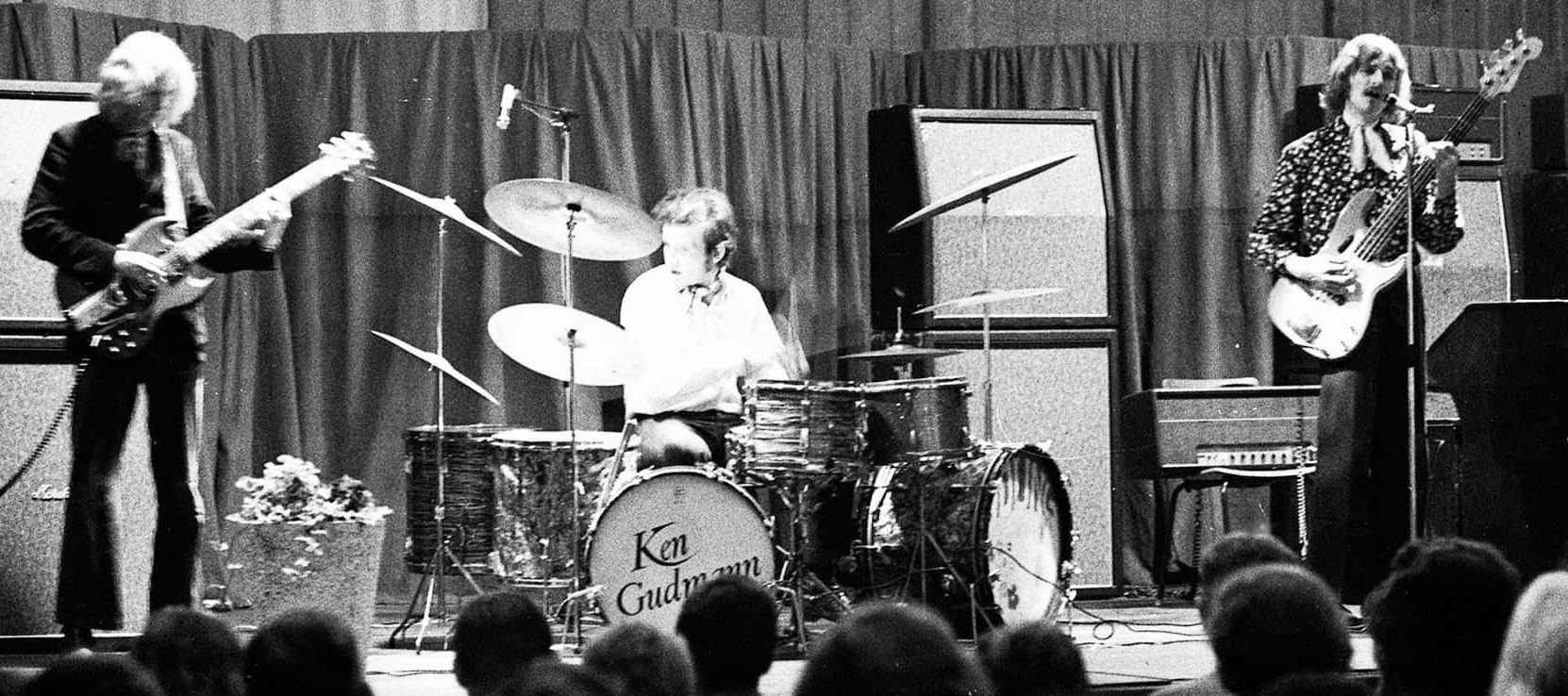
Tell us about the early days of the band. What did your repertoire consist of?
None of us were particularly skilled at writing lyrics, so we used material from poets like Dan Turèll, Thomas Winding, Jørgen Larsen (25 øre), and later, Niels Skousen. We also incorporated some of Peter’s favorite poetry, including works by Walt Whitman.
Our setlist included a mix of original songs and covers, especially from artists like Bob Dylan—whom we all admired. Initially, our music drew inspiration from bands like Cream, The Paul Butterfield Blues Band, and Canned Heat. As we evolved, we started playing tracks by B.B. King and Steppenwolf.
Would you like to share some memories of the early gigs? What other bands did you share the stage with?
We often played at Brøndby Pop Club, which could accommodate about 700-800 people.
Typically, there were 3 or 4 bands sharing the evening. There were no strict time limits on how long we were supposed to play, so the performances often dragged on, with the event ending 2 to 3 hours later than planned—this was quite common.
It was a large, open space with no seating, so people either sat on the floor or lay on blankets they brought from home, just enjoying the music in a laid-back atmosphere.
We shared the evening with many Danish bands of that era, including Steppeulvene, Burnin’ Red Ivanhoe, Beefeaters, Alrune Rod, Ache, Culpeper’s Orchard, and Maxwells, to name a few.
Young Flowers had the same booking agency, Scandinavian Booking Agency (SBA), that I had when I played with Peter Belli. SBA organized concerts and events across Denmark and Scandinavia, booking both Danish acts and well-known international bands, such as The Beatles, The Rolling Stones, Jimi Hendrix, Cream, The Who, The Kinks, and The Doors.
We were the support act for several big names, including Cream, Ten Years After, Rory Gallagher & Taste, Incredible String Band, Taj Mahal, Country Joe & The Fish, The Young Rascals, and many more. I remember that the English and Irish bands tended to be more reserved, while the American bands were much more outgoing and friendly.
How did the television series Blomsterpistolen come about?
In October 1967, Young Flowers (when Jens Dahl was still in the band) played a gig in Aarhus. Among the audience that night was Thomas Winding, an author, and a radio and TV producer, particularly known for his work with children and young people. At that time, Denmark had only one TV channel until 1988.
Thomas told us he had an idea for a TV series aimed at young people, consisting of three episodes, each lasting 25 minutes, to be aired on Saturday nights. The series would be called “Blomsterpistolen” (“The Flower Gun”). It was an unusual story about a spaceship landing with aliens equipped with flower-shooting guns, changing the Danish perspective on things.
Young Flowers was tasked with writing and recording the music for the series, and we were also to play a sort of leading role in it. The band Beefeaters, featuring Peter Thorup, was also supposed to have a minor part in the series.
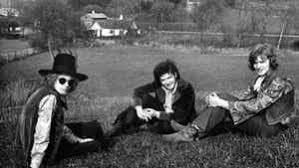
How did you get signed to the Sonet label?
In 1967, no record companies would sign a contract unless it was with a pop band making cover versions of songs by English bands.
As a result, Young Flowers had to finance the recording of their first single themselves.
Afterward, they secured a distribution agreement with Sonet.
Sonet in Denmark was owned by Karl Emil Knudsen, a well-known and respected jazz enthusiast. He made many recordings and released jazz music in several countries. He released their album.
In fact, Young Flowers never signed a formal contract with a record company. This turned out to be our good fortune. We always made our own decisions and produced our own music.
Were you hired to make music for films, such as “Cæcilie” and “Stille dage i Clichy” (Quiet Days in Clichy)?
“Cæcilie” was a short film made by a friend of the band, Hans-Henrik Phillip. He simply asked for some music for his film.
In 1970, the film director Jens Jørgen Thorsen hired us to create the soundtrack for his film “Stille dage i Clichy.” We also appeared in a party scene in the film.
Your debut album, ‘Blomsterpistolen,’ is such a classic. I’d love to hear about the compositions on it and what some of your strongest memories from recording it are. Where did you record it, and who was the producer?
When we composed the music for ‘Blomsterpistolen,’ we were partly inspired by the script and had two specific tasks to complete: I needed to create a guitar sound effect that would simulate a spaceship landing.
Thomas Winding wrote lyrics for a song called ‘Oppe i Træet,’ and he wanted us to set them to music for one of the episodes.
Peter came up with a melody for ‘Oppe i Træet.’
Thomas’s idea was that Ken would sit in a tree and sing the song during the episode.
However, Ken refused to sing, so Peter ended up singing the song while Ken sat in the tree, miming the lyrics!
Initially, we weren’t planning to record an album—it was only when we were working on the TV series that the idea came to us. The recording sessions took place in a cinema!
After the final screening at 11 pm, we would set up our instruments in front of the cinema screen and then start recording.
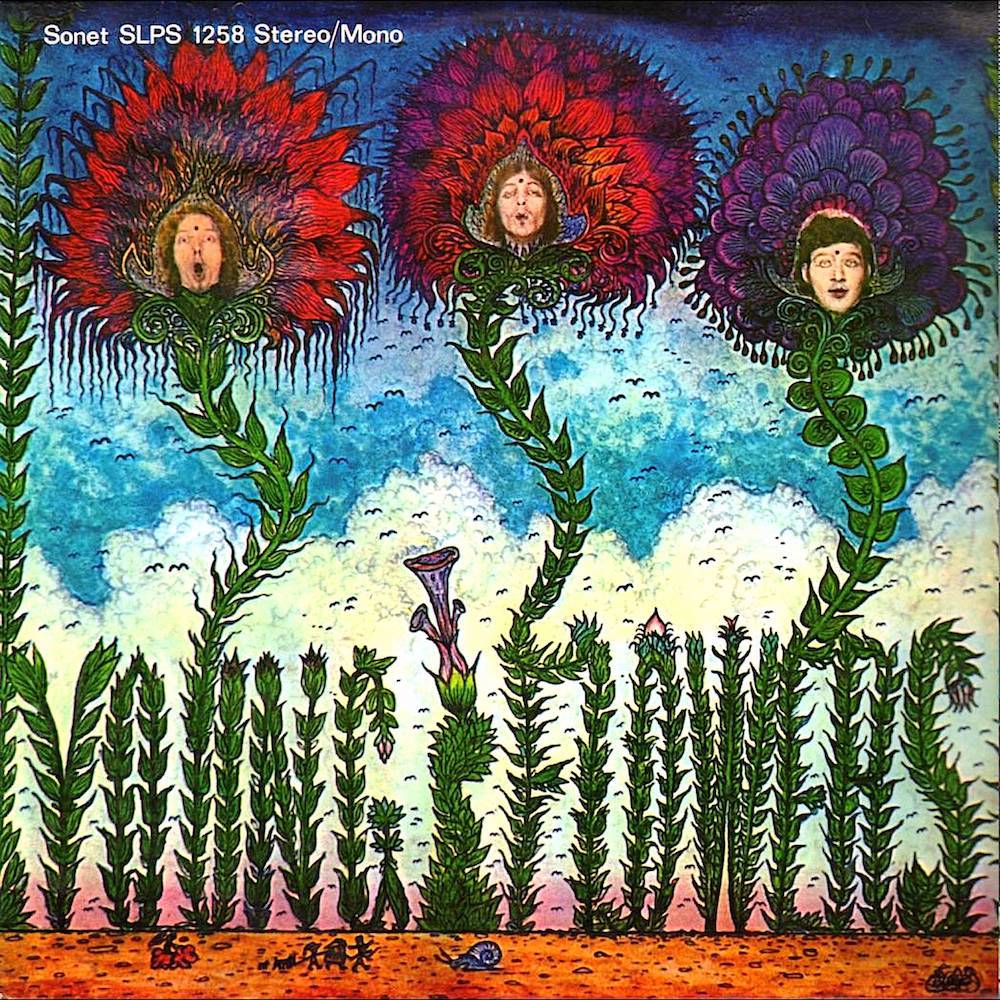
The owner of the “studio,” sound technician Ivar Rosenberg, sat in a small room at the far end of the space. There was a small window, about one square meter in size, through which we could communicate with him.
The recording equipment consisted of a tiny soundboard, seven to eight microphones, and Ivar’s homemade 8-track recorder, which used film tape for sound recording. Additionally, we had two Lyrec 2-track recorders for the final master tape.
The 8-track recorder was an unusual piece of machinery. It stood upright, about the size of a wardrobe, and it could barely support the weight of the recording film tape. To ensure it reached the right speed, it had to be manually adjusted.
Ivar was an incredibly kind and helpful man.
He had only recorded jazz and Danish schlager artists before, so he was quite surprised when we showed up with our Marshall stacks and a large drum set.
He quickly commented on the music: “This is outside my realm of understanding, but I find it interesting, and I’ll do everything I can to make it work. However, it’s up to you to ensure it meets your expectations.”
That was exactly what we wanted to hear.
We started with ‘Take Warning’.
The “original” Young Flowers had written and played this song before, so it was relatively straightforward, making it a good place to start.
Next came the “spaceship.”
Ivar and I had to get creative while Peter and Ken took a short break.
We used a tone generator, a record with a sound effect resembling a plane landing, an “Echoplex” echo unit, a wah pedal, and a guitar with the amplifier at full volume.
We recorded and mixed it until we were satisfied with the result for the series.
On the album, we called this piece ‘Ouverture’.
I also used the “Echoplex” unit on ‘The Moment Life Appeared’.
I used the tone generator and the wah pedal on ’25 øre’.
’25 øre’ was developed after Peter received some lyrics from a guy named Jørgen Larsen.
We found the lyrics peculiar but intriguing, so we decided to use them.
I had heard ‘On the Road Again’ by Canned Heat, which had a great boogie vibe, and we adapted our melody to fit our lyrics, drawing inspiration from that song to create ’25 øre’.
‘Oppe i træet’ is the most listener-friendly song on the album. It has a steady structure and a catchy tune.
Our audience goes wild when we play it, even at our concerts in 2024.
There’s a faint piano sound on the recording.
Peter wanted a fuller, richer sound in the main sections, so he recorded a few piano chords, which we added to the mix.
As he sat at the piano, he began playing a simple melody, almost like a music box tune.
I joined in, and we suddenly had about a one-minute recording.
Peter mentioned that this tune was made by his good friend and colleague Niels Harriet.
It was called ‘Peters fødselsdag’ (“Peter’s Birthday”).
It was a sweet and simple little melody, but where did it fit in?
Ivar Rosenberg figured it out.
He said, “I’ll cut the tape with the melody into five pieces, then we’ll place a piece between each track on the album. Problem solved!”
We renamed the melody to “Niels’ fødselsdag,” adapted from “Peters fødselsdag,” with parts 1, 2, 3, 4, and 5.
‘To You’ is a well-structured little song with lyrics by Walt Whitman.
‘Down Along the Cove’ is a Bob Dylan song.
Sometimes we played Bob Dylan songs at our concerts, partly because they are great songs, and partly to soften the volume, providing a contrast to the intense sound pressure we typically produced.
This was the first time I played two guitar solos, one in each stereo channel.
I had heard The Paul Butterfield Blues Band play the song ‘East-West,’ featuring guitarists Mike Bloomfield and Elvin Bishop, which fascinated me.
When we needed instrumental pieces for the TV series “Blomsterpistolen,” I thought, “We should create our own version of ‘East-West.'”
Neither Peter nor Ken knew it, so I led the way in creating it.
We had heard “phasing” on albums by the Small Faces and Jimi Hendrix, and it sounded incredible. Ivar knew about the concept.
In his experience, it was a technical error when sound alternated between phase and inverted phase, but he was willing to give it a try.
To achieve the best effect, we decided to apply it to the drums.
Today, you can buy a phasing effect box for little money, and it’s common in guitar setups.
At that time, Ivar achieved the effect by copying the drumming onto the two Lyrec recorders, then playing the drums in unison while manually adjusting the speed—ever so slightly—on one of the recorders. If the timing was off even a fraction, it sounded like two drummers playing out of sync, which meant starting all over.
Given that the song is 8 minutes and 56 seconds long, achieving the desired effect could take all day.
But we finally got it right.
The song was named ‘April ‘68’ because we recorded the album in April 1968.
This particular song often lasted more than 30 minutes during concerts.
What was the reception like?
The critics who enjoyed the TV series wrote in their reviews that they hoped we’d release an album with the music. As a result, the album received positive reviews, and the reception was generally good.
The audience also appreciated the album.
It sold 3,000 copies, which was quite an accomplishment at the time.
Would you say it’s a concept album?
I suppose you could call it that.
We knew the concept we were working with and had to find a way to bring it to life.
Your second album, No. 2, was released a year later. The sound changes quite a bit. What are some of your recollections from recording it?
We discussed and planned to make a new album, which was set to happen in mid-January 1969.
In the autumn of 1968, we went on a 3-week tour to different schools across the country, alongside a theatre group where we provided “sound settings” for a science fiction play about Batman. This is where we met Niels Skousen, who was an actor in the theatre group. He was also a songwriter and singer—not rock, but folk music. Niels supplied us with 3 songs that we adapted with new tunes to match our sound.
Once again, we used Ivar Rosenberg’s “studio.” Both our sound and our playing style had evolved a bit since ‘Blomsterpistolen’. I had replaced my Gibson SG Standard guitar with a Les Paul, which gave our music a bit more blues influence.
The first song we recorded for ‘No. 2’ was ‘You Upset Me Baby’ by B.B. King. We had played it numerous times at our concerts, so it was a great song to kick off our recording sessions.
We played it live in the studio—first take, and it was a wrap. Peter later added a second vocal track. On the album, you can hear Ivar asking if we’re ready, and then we start playing.
‘And Who But I Should Be’ was a completely different story.
The tune was written by Peter and his friend, the guitarist Niels Ringling, with lyrics by Walt Whitman. It’s a true “layered” production with both acoustic and electric guitars, Echoplex, sound effects, and phasing—this time on all the instruments.
‘Calypso’ is a real feel-good song from Niels Skousen. Ken and I join in vocally on the last part of the song.
‘Won’t You Take My Place in the Queue’ is another text from Niels Skousen. We thought a honky-tonk piano would be a fun addition to the start of the song, so when Tommy Seebach happened to stop by, he played the piano part. We also thought it would be interesting to include Niels Skousen, so just when the song fades, it’s Niels singing and playing a piece of his original version. Ken plays the hand drum, and we added street noise to make it sound like street musicians.
‘Slow Down Driver’ is yet another song with lyrics by Niels Skousen. Given that there was a “reduce speed in traffic” TV campaign at the time, we felt this song was relevant. The guitar bit between the verses is recorded in two rounds, with one of the guitars played backward, inspired by The Beatles. At the end of the song, Ivar and I created a traffic accident involving a hit-and-run driver. We used a mix of sound effects to simulate the accident. Even today, I find it quite unsettling.
‘The Daybreak’ has lyrics by Walt Whitman and has become one of our signature songs. My oldest daughter loves it and calls it “her song.” We still play it at almost every concert.
‘Kragerne Vender’ was a free-form jam session. It’s more like a musical collage—something you could only release on an album when you paid for your own production.
It started with Peter and Ken recording a base tape consisting of bass and drums. I then recorded the guitar based on what I’d heard them play. Afterward, we invited some musician friends to join in and play their parts.
These were Niels Harrit on saw and tenor saxophone, Bent Hesselmann on alto saxophone and flute, Lars Bisgaard on vocals, and Lasse Lunderskov on vocals—members of the group “The Maxwells.” Additionally, Steen Claesson from Burnin’ Red Ivanhoe joined us on violin.
The process involved having each musician go into the studio one by one to play their instrument or sing, hearing only the bass and drums. When everyone was done, we had a lot of tracks consisting of individual takes without anyone knowing what the others had played. We used this material to create a collage of sounds. It was great fun to make.
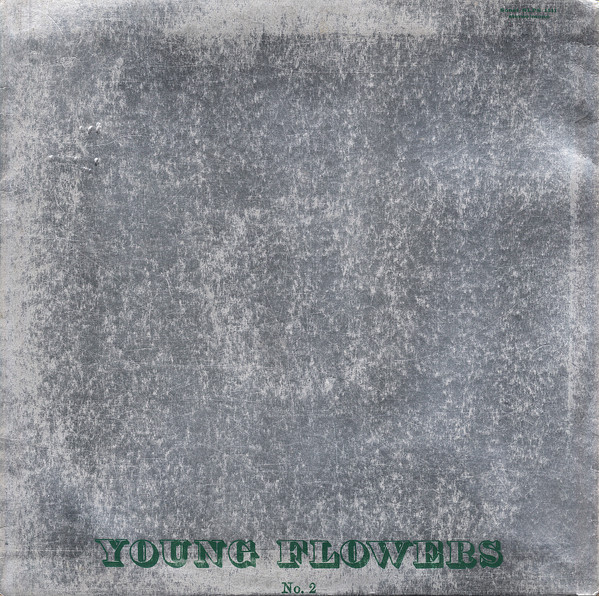
How did the collaboration with Peter Thorup on his album ‘Wake Up Your Mind’ come about? And what about your work with Sebastian?
We had been working hard with Young Flowers, and after a concert in December 1969 as the opening act for Delaney & Bonnie and Friends with Eric Clapton and George Harrison, we felt worn out. The inspiration was gone. We organized a concert at the beginning of January 1970 called “Kragerne Vender,” where we invited some musical friends, including Bent Hesselmann and Peter Thorup. It was a fun and enjoyable event, so we asked Bent and Peter to help us meet our remaining contractual obligations. This led to our performance in late January as the opening act for Jethro Tull. From then on, we played as a five-piece group under the name “Young Flowers and Friends.”
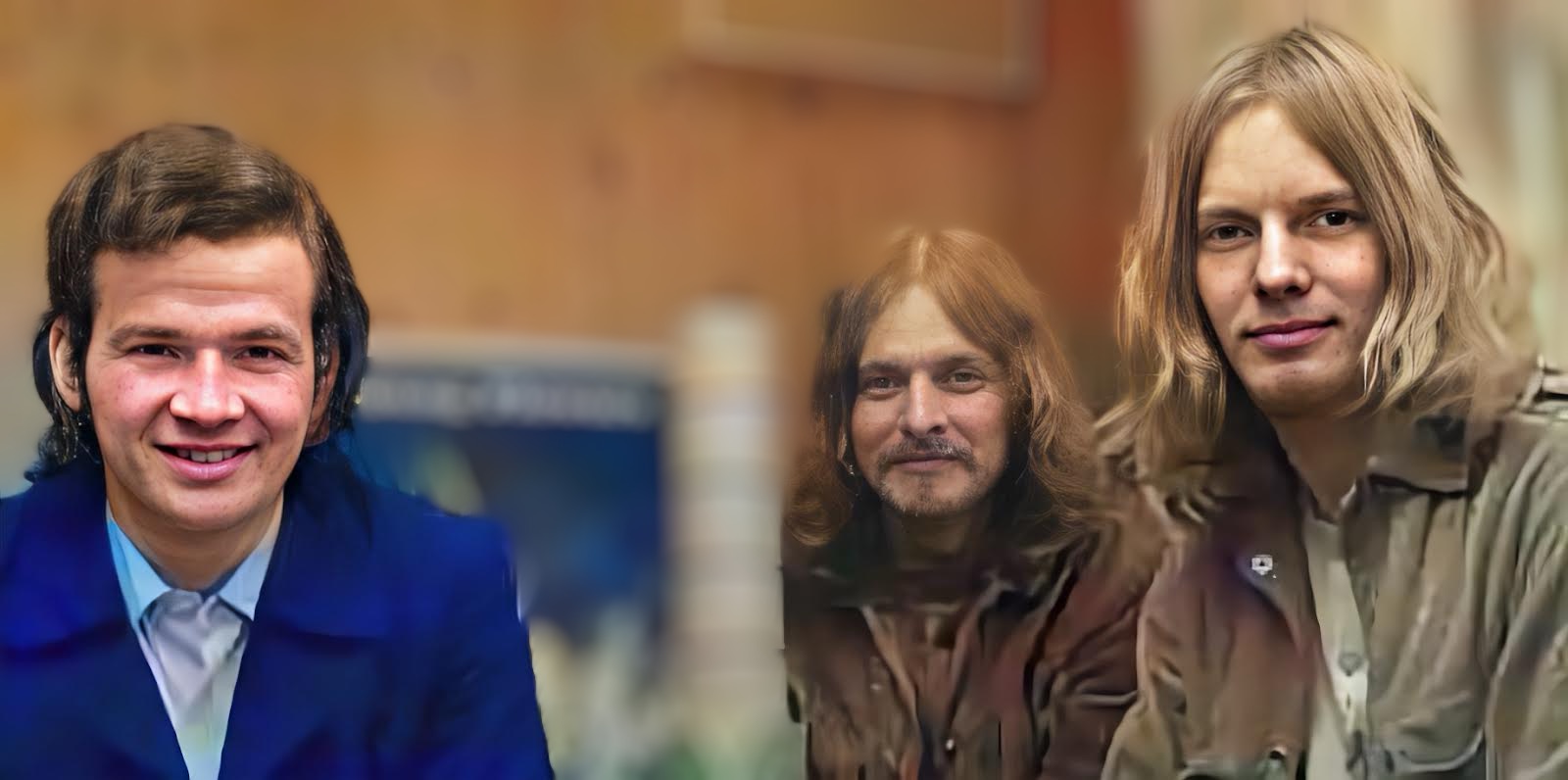
Our final gig was on April 24th at Brøndby Pop Club, alongside other acts like Taj Mahal. It was also Brøndby Pop Club’s final opening day.
Peter Thorup and I had known each other since 1964 when we both played at Dyrehavsbakken—he with The Blackpooles at a restaurant called Soho, and I with Peter Belli & Les Rivals at Place Pigalle. We were good friends outside of music. In 1970, Peter Thorup told me, “I’ve signed a contract with the record company Philips to make at least one album. Would you, Peter Ingemann, and Ken like to join me?” We agreed, and he gathered us with other musicians from Beefeaters, The Blackpooles, and Burnin’ Red Ivanhoe. We recorded in the Rosenborg studio in February and March of 1970.
We didn’t have time to rehearse, so everything was jam-based. We recorded 13 songs, intending to release a double album called ‘Copenhagen 1970’. After recording, Peter moved to England to play with Alexis Korner, and we didn’t hear much about the project until one day when 7 songs were released on a single album titled ‘Wake Up Your Mind’. It was unexpected. After Peter passed away in 2007, I was contacted regarding the remaining 6 songs. I had a copy of the full recording on tape, and from this tape, the 6 songs were selected and released as bonus tracks on a CD in 2008.
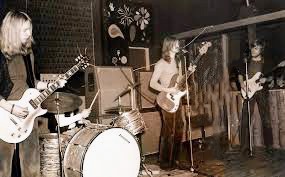
Regarding my work with Sebastian, he was a folk singer with the same management as Peter Ingemann, Carsten Smedegaard, and me. Carsten and I were busy with Rainbow Band when we were asked if we’d work as session musicians on Sebastian’s album. We agreed, but it wasn’t a good fit. It didn’t work out, and I realized that I wasn’t suited to being a session musician. Fortunately, Sebastian quickly found a band that was a perfect match for his very lovely songs.
What led to Rainbow Band?
As the original Young Flowers neared its end, Peter and I were looking for new opportunities.
Peter began his collaboration with Niels Skousen in a project that led to “Skousen & Ingemann.” Ken joined a band called “Culpeper’s Orchard.”
Bent Hesselmann told me that he had some friends in the jazz scene who were becoming interested in the rock scene. They wanted to explore the idea of creating a jazz-rock fusion band. These friends were Niels Brøndsted on piano, Bo Stief on bass, and Simon Koppel on drums.
I found this idea intriguing, so we agreed to have some rehearsals in Bo’s basement. It quickly became apparent that Simon wasn’t a good fit for rock drums, and he decided to withdraw from the project.
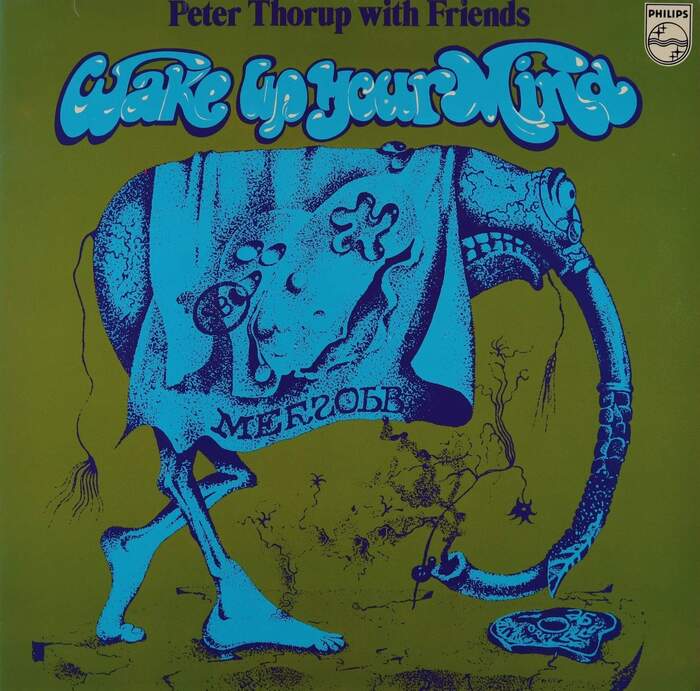
The rest of us agreed to continue, and I contacted a drummer I knew from Hit House, Carsten Smedegaard. At Hit House, he played with a band called “The Beethovens,” where I noticed his airy and elegant drumming style. He was the perfect person for our project. Fortunately, he agreed to join, and we had our band line-up in place.
However, we still needed a singer. Bent suggested Lars Bisgaard, whom I knew from “The Maxwells.” Lars had also participated in our recording of ‘Kragerne Vender’ from the album ‘Young Flowers Nr. 2.’
The line-up was: Lars Bisgaard on vocals, Bent Hesselmann on saxophone and flute, Niels Brøndsted on piano, Bo Stief on bass, Carsten Smedegaard on drums, and myself (Peer Frost) on guitar.
We called the band “Rainbow Band.” The name was meant to reflect the broad range of styles encompassed by the band. Since we wanted to create original music, we agreed that anyone who could write songs should contribute. Rainbow Band, which later became Midnight Sun, never played a cover song.
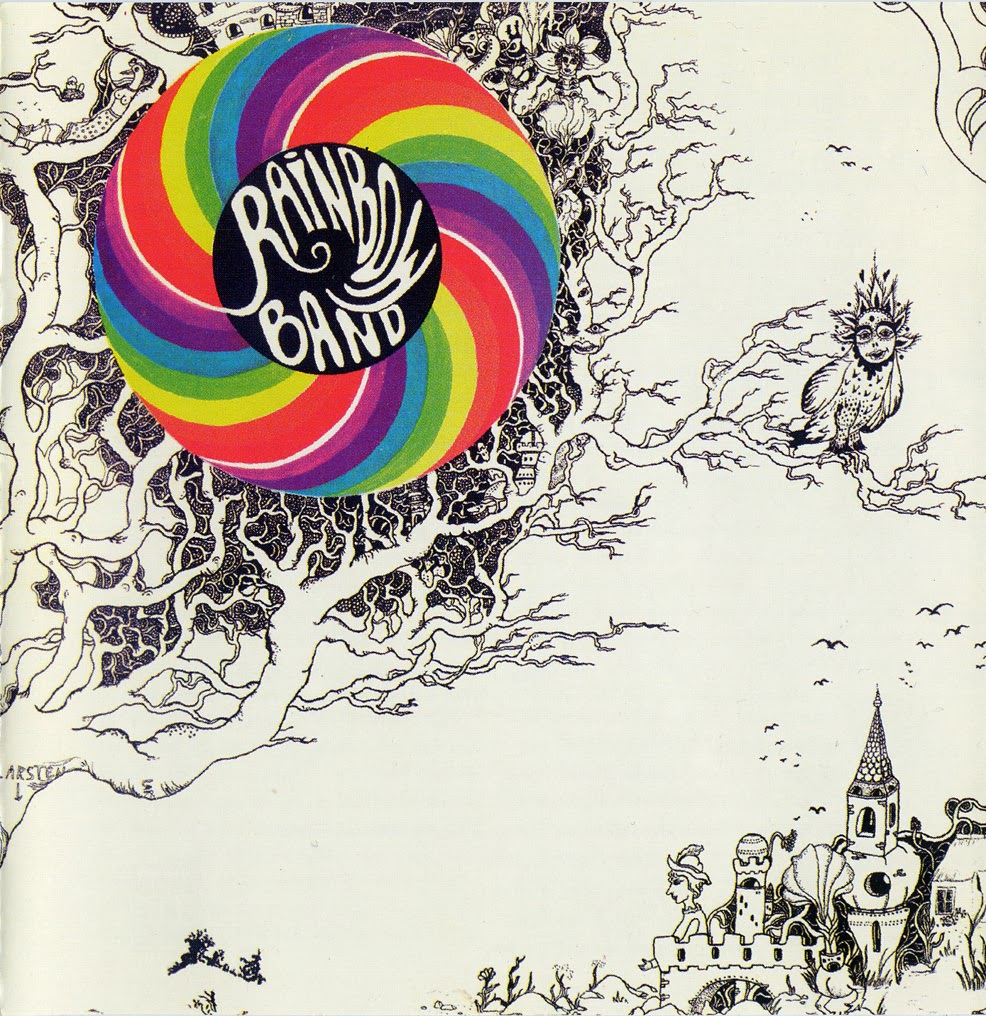
What led to the two versions of the album? There’s one recorded with singer Lars Bisgaard and released late in 1970, and then when Allan Mortensen replaced Bisgaard in December 1970, four new tracks were recorded, while Mortensen redid the vocals for the remaining three tracks. This version was released in February 1971. So in essence, these are two different albums with similarities. Could you tell us what led to this situation?
Niels Brøndsted knew little about rock industry songwriters or pianists. As a consequence, all the band members went to a holiday home together for a week, where we listened to Carole King and The Band whenever we weren’t rehearsing.
During this time, we discovered that Niels had a tremendous talent for writing melodies that suited us perfectly.
We had an agent, Walter Klæbel, who was working for us. Our band had a deadline—to perform our first concert on June 23, 1970, at “Tivoli’s Koncertsal” as the opening act for Santana. We also had a record deal with Sonet. After the concert, we could focus on the album.
We met sound engineer Freddy Hansson, who became the engineer and co-producer on all of Rainbow Band/Midnight Sun’s albums. Each band member contributed songs to the first album, Rainbow Band. Bent created three songs, Niels two, Bo and I each made one, and Lars wrote the lyrics for three.
The recordings were completed in August, and the album was released in October.
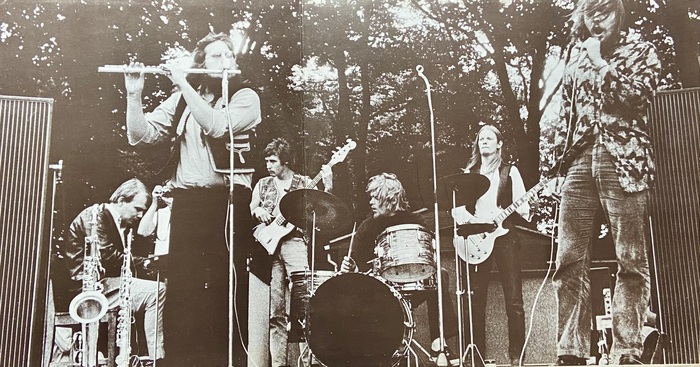
After two months of touring, we and Lars realized that this collaboration had to end. In Aarhus, Bent had heard a band called “Tears,” with a lead singer he thought would suit Rainbow Band: Allan Mortensen.
We convinced Allan to come to Copenhagen and started rehearsing with him. When Sonet learned that we had replaced our frontman, they considered it a waste of time and money to promote an album that had only been on the market for two months. They agreed to finance a re-recording with Allan replacing the vocals on all songs. This took place in February 1971.
A new text was written for ‘Where Do You Live,’ which was renamed ‘Talking’. Allan also contributed a new song, ‘Sippin’ Wine’.
Given the significant changes and the fact that we’d been playing these songs live for a while—altering them slightly—and that Allan brought a more soulful quality to the band, we decided to re-record most of the album.
The re-recording had to be done quickly, so the new version of the album was sold with the original cover and an insert with new information, the tracklist, etc.
A few months later, we received a letter from an American lawyer stating they owned the rights to the name “Rainbow.” Thus, we were forced to change our name to “Midnight Sun.” When we signed with MCA for a global release, they made a new album cover with a drawing by Roger Dean.
Toward the end of 1971, Allan Mortensen announced that he’d been offered a role in the first Danish production of the musical Jesus Christ Superstar and thus had to leave the band. He was replaced by Frank Lauridsen, who provided the vocals on the Walking Circles and Midnight Dream albums. Bo Stief was replaced by Jens Elbøl in 1972 (it’s Jens who plays on ‘Midnight Dream’).
I’d also love it if you could talk about the tracks on the album.
Version 1 (Lars Bisgaard)
Version 2 (Allan Mortensen)
Side A:
Track 1, version 1: ‘Where Do You Live’ features an airy acoustic guitar.
Track 1, version 2: Renamed ‘Talking,’ New lyrics, it’s more straightforward, with a stronger piano solo.
Track 2, version 1: ‘King of the Sun’ has dual vocals in the chorus, with acoustic guitar and saxophone solos.
Track 2, version 2: Features only one vocal in the chorus, and the saxophone solo is removed.
Track 3, version 1: ‘Nobody’ has a simple piano solo and a flute playing in unison with the vocals.
Track 3, version 2: The flute is removed, and the piano solo is more complex.
Track 4, version 1: ‘B.M.’ includes sound effects at the beginning and a double-bass solo with electric bass followed by a chase between the two.
Track 4, version 2: Renamed ‘Where Are You Going To Be,’ it’s slower with a new saxophone solo. The original electric guitar solo is replaced, and the song ends in “sound chaos.”
Track 5, version 2: ‘B.M.,’ sound effect removed.
Side B:
Track 1, version 1: ‘Where Are You Going to Be’ features acoustic guitar, electric guitar solos, and a vocal intro.
Track 1, version 2: Replaced with ‘Sippin’ Wine,’ a new track written by Allan Mortensen.
Track 2, version 1: ‘Living on the Hill’ has double vocals, saxophone and guitar solos, and a steady acoustic guitar throughout.
Track 2, version 2: Single vocal in the verses, only sporadic acoustic guitar, vocals removed from the transitional bridges, saxophone in the first transitional bridge, flute in the second transitional bridge, third and fifth transitional bridges removed, and the guitar solo is altered and extended.
Track 3, version 1: ‘Rainbow Song’ has a flute solo, acoustic guitar, contrabass, electric piano, and electric guitar.
Track 3, version 2: Uses the same recording as version 1 but with new mixing.
And this led to three albums by Midnight Sun. Could you share some thoughts on the debut album by ‘Midnight Sun’?
We viewed the album as a kind of “business card” that introduced each band member.
Additionally, it was intended to showcase the fusion of jazz and rock music.
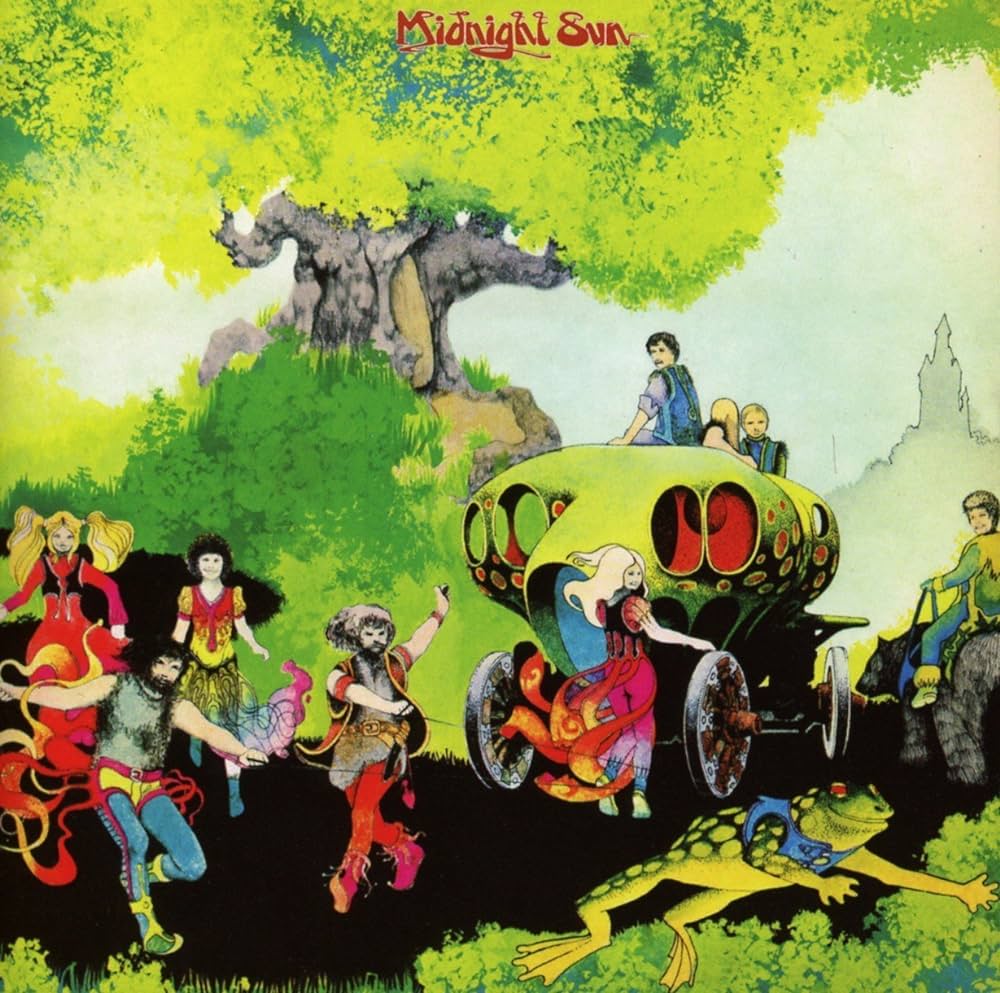
How would you compare it to ‘Walking Circles’ and ‘Midnight Dream’?
I think it’s more accessible.
‘Walking Circles’ is quite musically complex—perhaps a bit too complex for my taste.
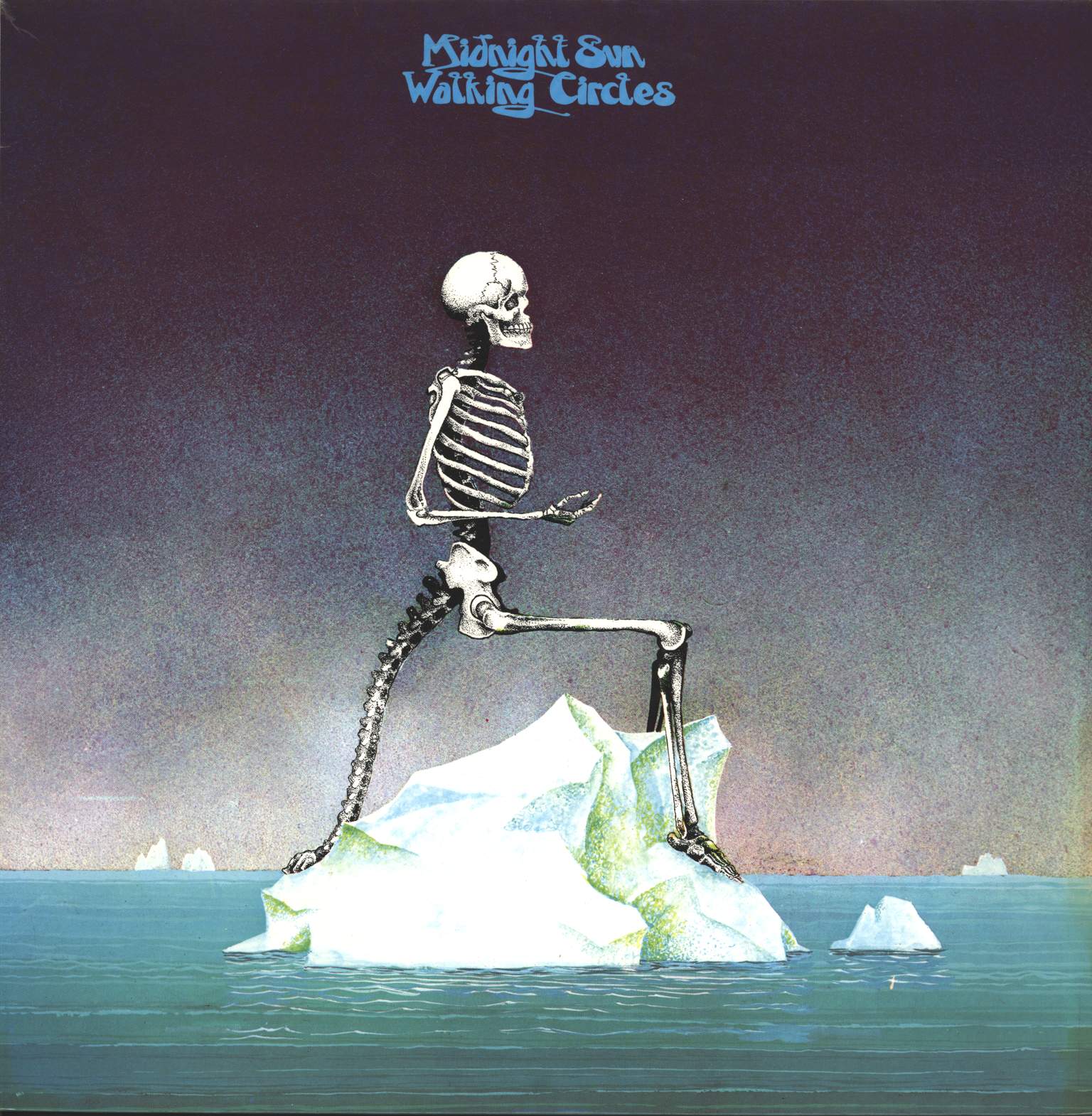
With ‘Midnight Dream,’ I feel like we returned to a more rock-oriented version of the band.
Personally, I also think we reached a peak in our teamwork on ‘Midnight Dream.’
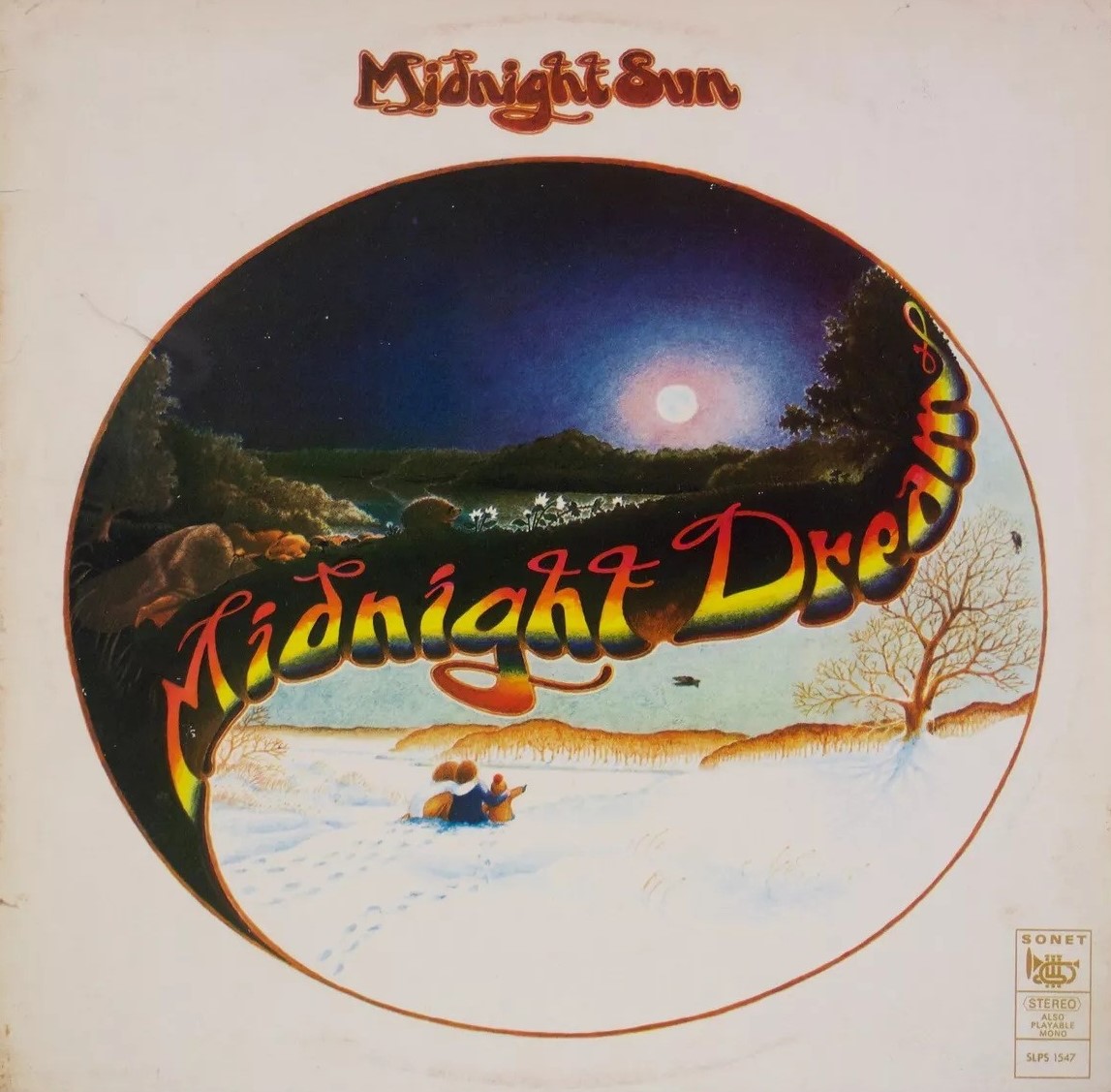
Did you join Savage Rose in 1973? Tell us how long you stayed with the band and which albums you appeared on.
I worked with Savage Rose at various times over a span of 33 years.
In the autumn of 1966, I received a letter from drummer Alex Riel, asking if I was interested in joining a band with two brothers that he knew. At that time, the band consisted of Thomas Koppel, Anders Koppel, Lone Koppel, and Alex Riel. After two rehearsals, I turned down the offer to be part of the band. I couldn’t see myself fitting in with that lineup.
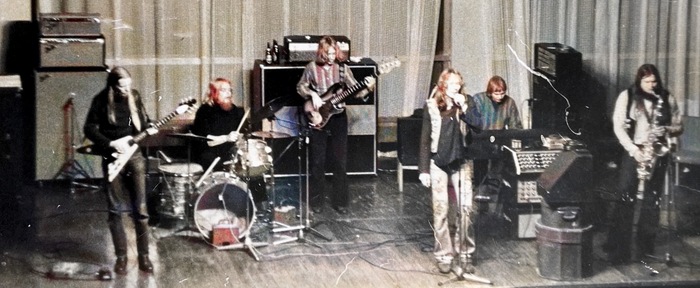
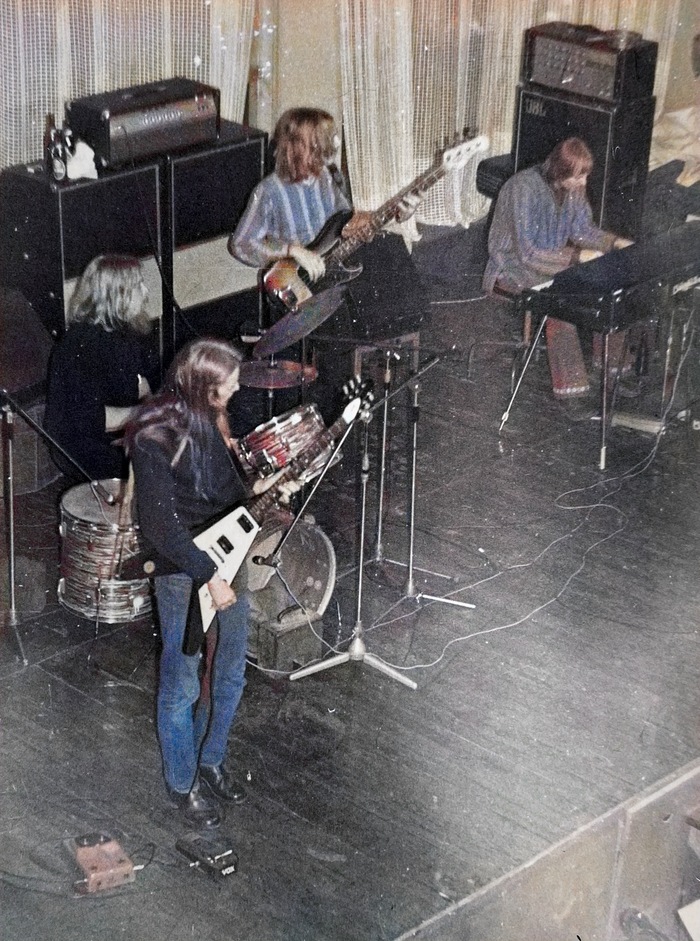
In 1973, Thomas and Annisette approached me. They had plans to reorganize Savage Rose.
This time, the lineup was:
Annisette on vocals, Thomas Koppel on piano, Anders Koppel on organ, Rudolph Hansen on bass, Ken Gudman on drums, and myself on guitar.
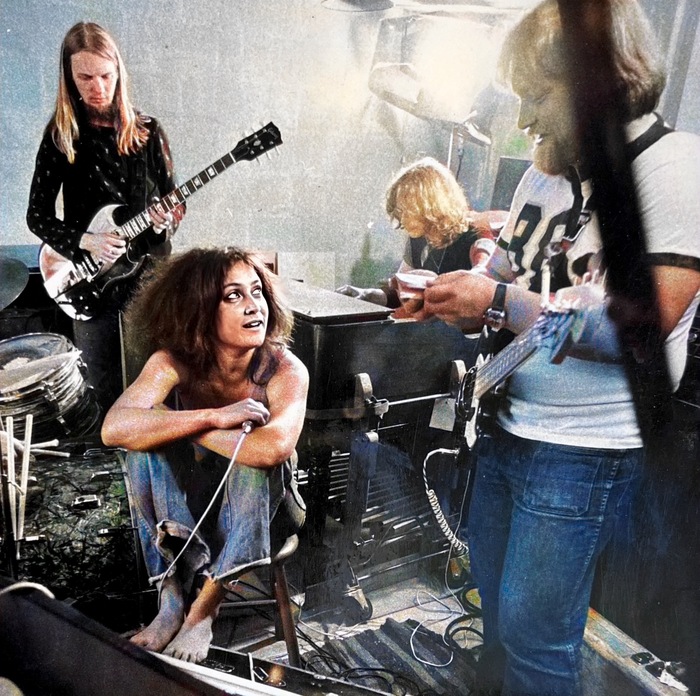
I knew Rudolph from The Defenders and as the younger brother of Per-Oluf “Flob” Hansen from Les Rivals. Ken and I had played together in Young Flowers.
They showed me a collection of new songs they had written, and I didn’t want to miss out on the opportunity, so I agreed to join the band.
We recorded an album for Polydor, titled ‘Wild Child,’ and went on tour for about two years. However, during the recordings for the follow-up album, tensions arose in the band. This led to the cancellation of both further recordings and the tour.
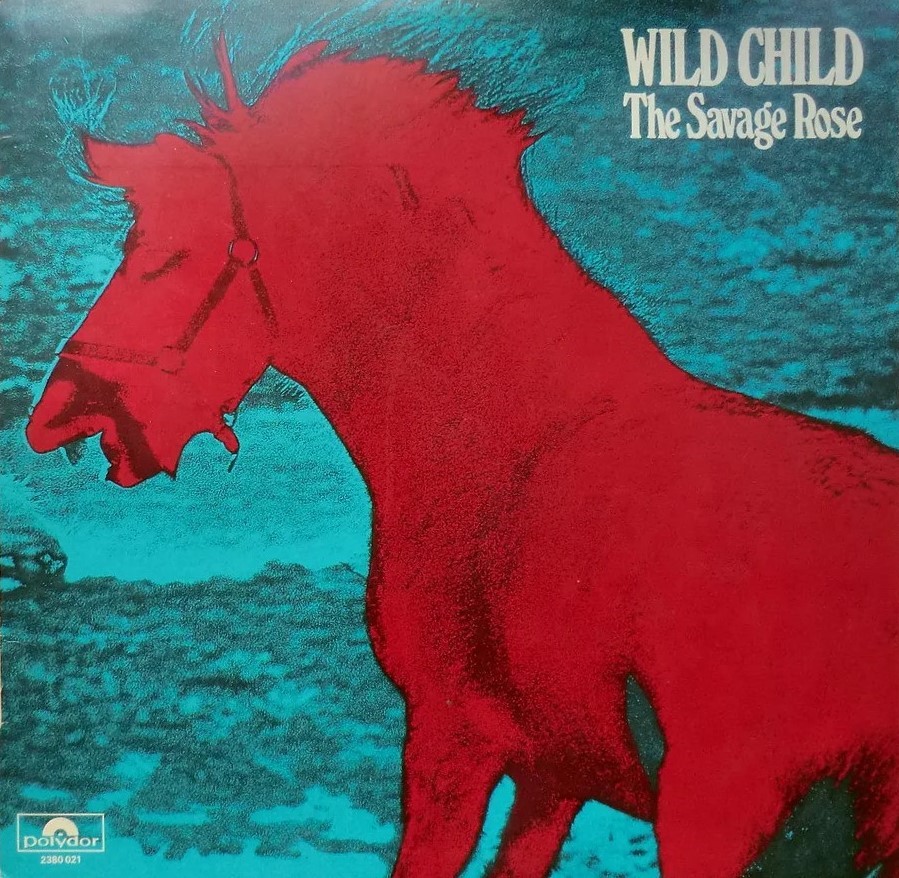
In the spring of 1976, Thomas and Annisette were ready to continue. They had renewed the recording contract with Polydor. After about six months of rehearsals with various musicians, including Bent Hesselmann from Midnight Sun, the musical style had shifted. It became more folk-oriented, with Thomas playing accordion and piano. We didn’t have a bass player, and John Ravn played homemade drums and Moroccan hand drums. Annisette began writing more lyrics in Danish.
The new lineup was:
Annisette on vocals, Thomas Koppel on piano and accordion, John Ravn on drums, and myself on saz, dobro, acoustic, and electric guitar.
With this lineup, we recorded ‘Solen Var Også Din’ (“The Sun Was Yours As Well”). When we submitted the finished album to Polydor, they were shocked—it was far from what they had expected, and they refused to release it. Fortunately, Sonet agreed to release the album, and we toured with this lineup for about four years. At this point, Thomas and Annisette became very politically focused, and I decided to leave the band.
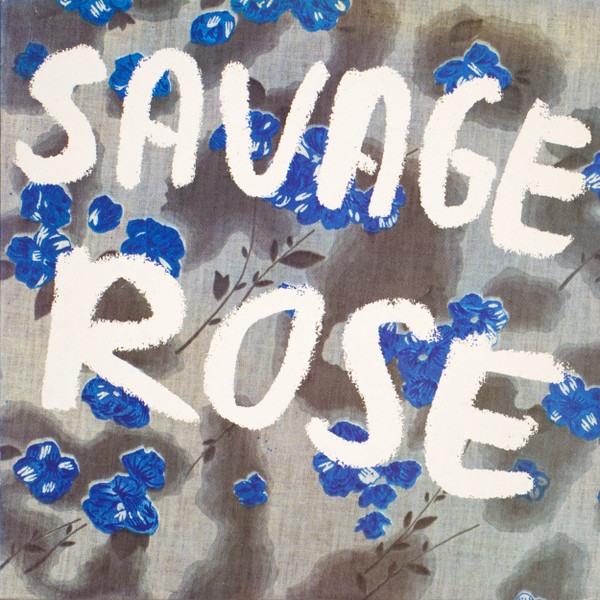
In 1986, we tried to work together again. I joined the studio sessions for the recording of the album ‘Sangen For Livet’ (“The Song for Life”), but it didn’t work out, and the idea was dropped. The album was then completed with another guitarist, Christian Sievert.
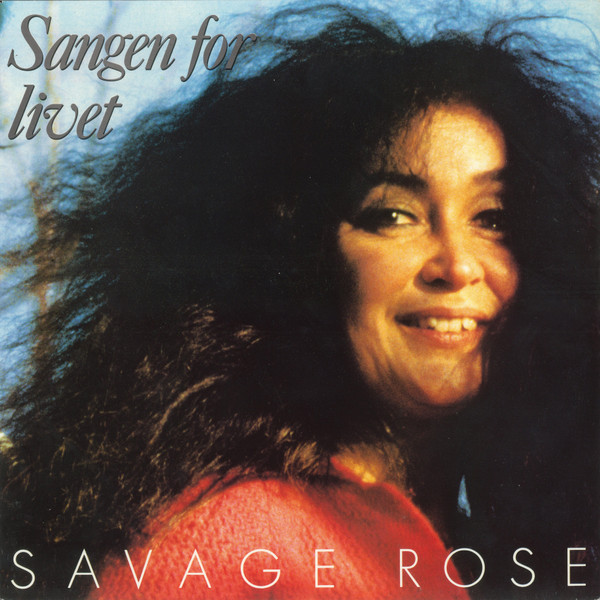
In 1988, Thomas and Annisette decided to create a double album consisting of 19 working-class and protest songs from different countries. Christian Sievert was still part of the band, and we enjoyed working together. The result was the album ‘Ild og Frihed’ (“Fire and Freedom”).
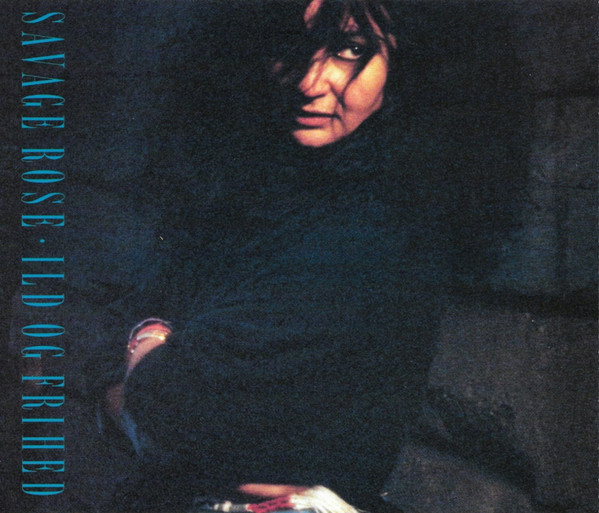
We toured with that album for about 2-3 years.
Eventually, Savage Rose disbanded. First, Thomas and Annisette moved to the USA, then to Puerto Rico, where Thomas suddenly died in February 2006.
When Annisette returned to Denmark after Thomas’ death, she wanted to carry on with Savage Rose. She asked me to join them for a 17-day tour in December 2006, which I agreed to. That was the last time I worked with Savage Rose.
Fortunately, Annisette has continued with Savage Rose and is still making music and touring in 2024.
There are so many projects you were part of that it’s nearly impossible to mention them all, but let me ask about Stig Møller, Sebastian, and Skousen & Ingemann.
In 1967, when Les Rivals ended, our drummer, Preben Devantier, formed the band “Steppeulvene” with Eik Skaløe, Stig Møller, and Søren Seirup. I knew Søren from Beefeaters, and I got to know Stig and Eik through several events where we played together.
In 1972, Stig Møller made an album on which Carsten Smedegaard (from Midnight Sun) and I performed. Since then, Stig, Peter Ingemann, and I have played a handful of concerts together.
The same goes for Skousen & Ingemann. In 1971, I performed on one song for an album with Niels and Peter. Afterward, we played several concerts together, just like with Stig. However, this never led to a permanent collaboration.
My collaboration with Sebastian involved only the album ‘The Godess’.
In 2002, we revived Young Flowers, and we played a few concerts until the death of Ken in 2003.
In 2015, we formed “Young Flowers Reunion” with the former drummer of “Gasolin”, Søren Berlev. In recent years, we’ve worked with either Søren or the drummer of Kim Larsen’s band “Bellami,” Hans Fagt.
What are some of the most important players that influenced your style, and what did they employ in their playing that you found appealing?
Initially, I was inspired by Hank Marvin (The Shadows), with his elegant sound, use of the whammy bar, and delay effects.
Peter Green (Fleetwood Mac) influenced me with his fabulous and tasteful approach to playing the blues.
Frank Zappa (Mothers of Invention) fascinated me with how he broke conventional music norms.
David Lindley (Kaleidoscope) impressed me with his incredible versatility as a multi-instrumentalist.
The ultimate example of building a song from a humble beginning to an extraordinary crescendo is ‘Seven-Ate Sweet’ on Kaleidoscope’s 1969 album ‘Incredible’. It still leaves me breathless every time I hear it.
Additionally, I have always admired the band “Little Feat” for their ability to blend different styles and make them uniquely their own.
The fact that each member is an excellent musician only enhances the experience.
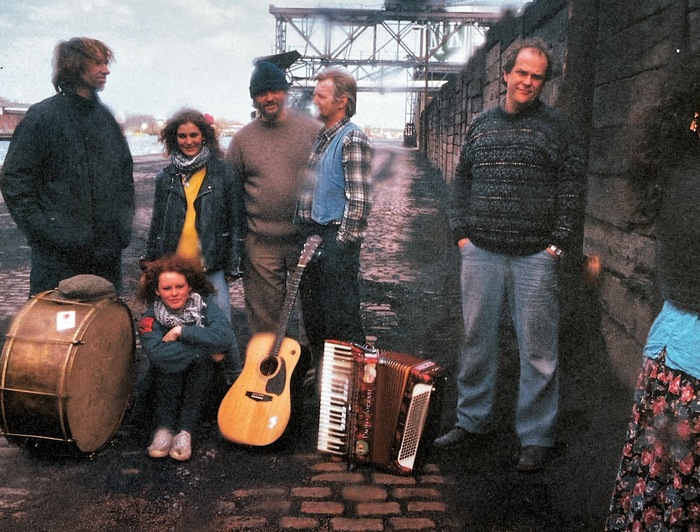
What are some of the recent projects you’ve been involved in?
Young Flowers Reunion.
In 2015, we released the album ‘Young Flowers Reunion Live’.
In 1969, the year after ‘Blomsterpistolen,’ we composed music and acted in another TV film by Thomas Winding called “Den Blaa Løjtnant” (“The Blue Lieutenant”). We released the music from that film on an album in 2023, with the 1969 music on one side and new songs on the other side.
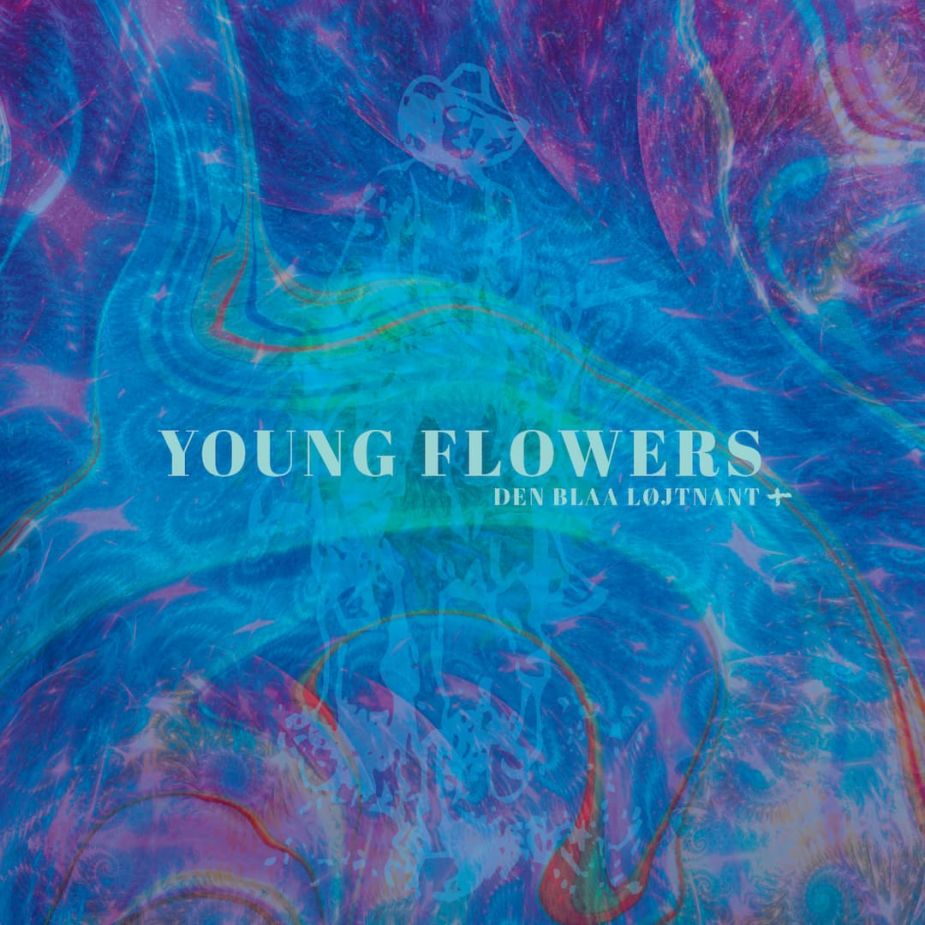
What currently occupies your life?
I play 10 to 12 concerts a year with Young Flowers Reunion and spend a lot of time on music—composing, rehearsing, and recording—in my “man cave.”
I also enjoy spending time with my wife, children, children-in-law, and especially my grandchildren, along with my extended family and friends.
Looking back, what was the highlight of your time in the bands? Which compositions are you most proud of? Where and when was your most memorable gig?
Here are some highlights and memorable gigs from my career:
Les Rivals:
Performing as the backing group for one of the godfathers of rock, Chuck Berry, at a concert in Copenhagen in 1966.
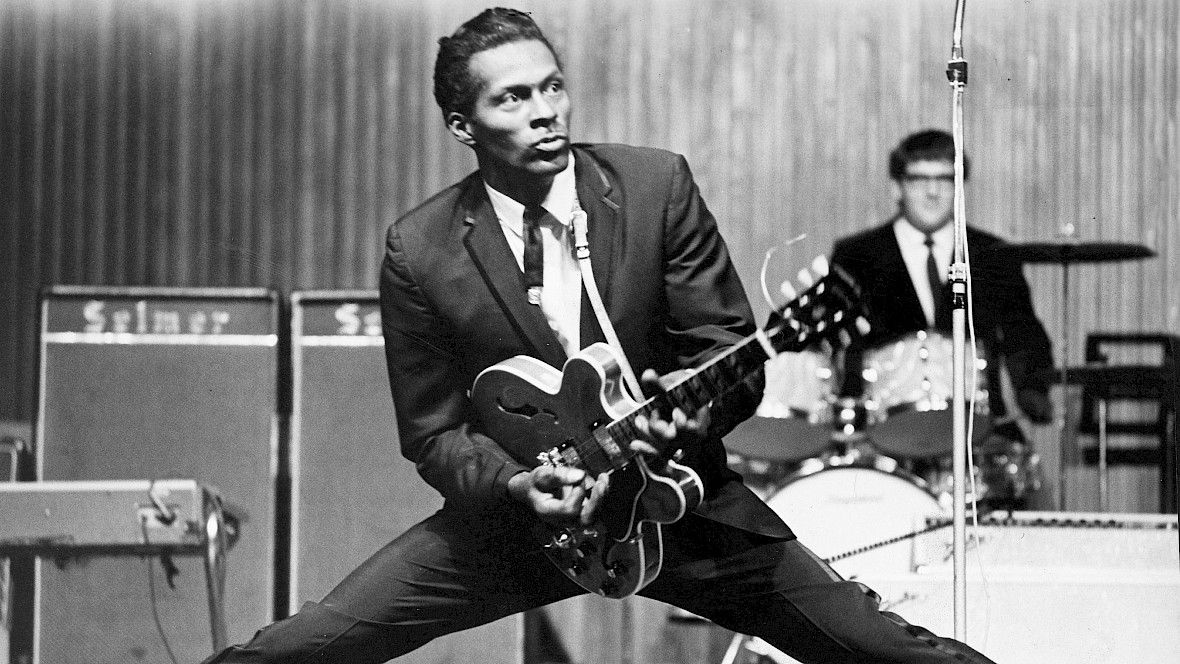
Having the drummer Jimmy Nicol, who replaced Ringo Starr during The Beatles’ 1964 tour of Scandinavia and Japan, play on our first album, ‘Move On,’ just three months later.
Touring Finland and Scotland.
Sir Henry:
Recording albums.
The Beatnicks:
Recording an album and touring Scandinavia.
Young Flowers:
Touring for six weeks in Canada and the USA in 1969.
Performing at “The Scene” in New York, with the band “Family” as our support act.
Spending a week with Cream and becoming friends with Jack Bruce, Ginger Baker, and Felix Pappalardi.
Rainbow Band/Midnight Sun:
Touring the Netherlands for a week and performing at “Club Paradiso” in Amsterdam.
Receiving favorable reviews in English music magazines.
Performing at the very first “Roskilde Festival.”
Savage Rose:
Contributing to the transformation from a rock band (‘Wild Child’) to a folk-oriented act (‘Solen Var Også Din’).
Performing at a massive celebration for 40,000 Kurdish refugees in Duisburg, Germany.
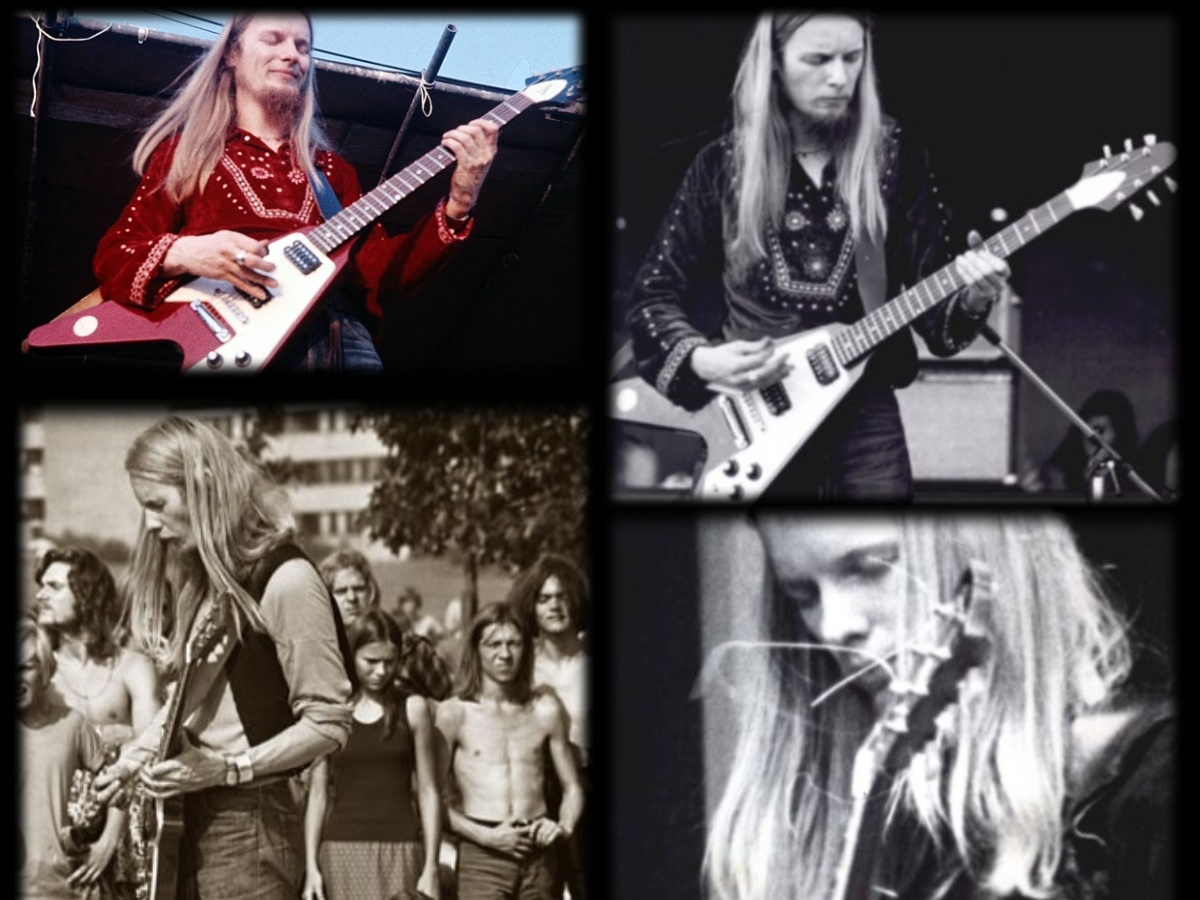
As a solo musician:
Touring for 10 days as a bass player with Peter Thorup and Alexis Korner with “New Church” in Germany.
Most Memorable Composition:
Since my career as a composer is quite limited, I’d have to say I’m most proud of ‘Living on the Hill’.
Most Perfect Recording:
In my opinion, the most perfect recording is the song ‘Wherever You Are’ from the album Midnight Dream.
Most Memorable Gig:
Performing at “Whisky a Go Go” in Los Angeles with “The Flying Burrito Brothers” and John Mayall. Since it was a regular haunt of The Doors, it became an unforgettable experience.
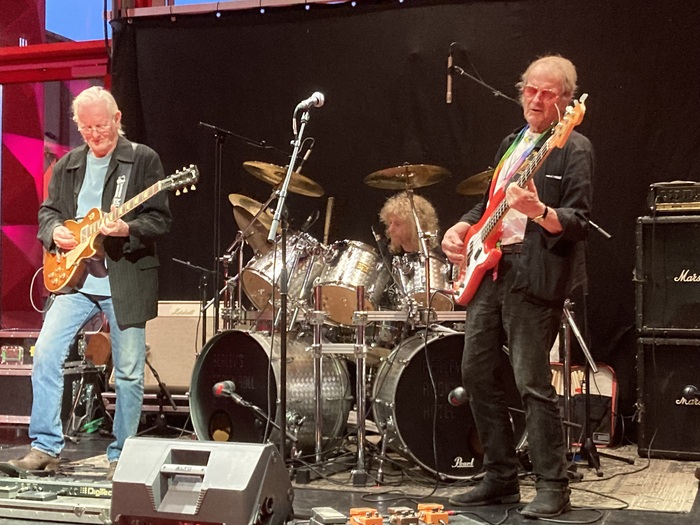
Is there any unreleased material from groups and projects you were part of?
With “Box 5”: 3 studio recordings.
With “Tommy Bas Band”: at least 30 live recordings, not officially released but available for streaming on Spotify.
With Savage Rose: at least 20 outtakes and unfinished recordings.
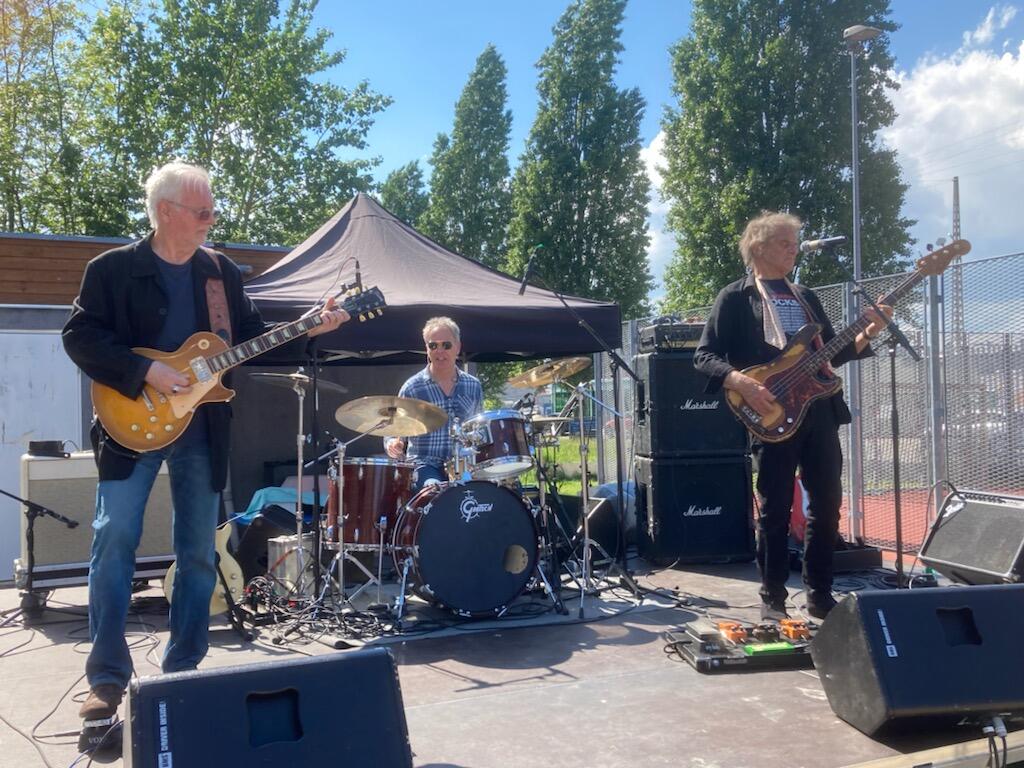
Thank you for your time. The last word is yours.
I often believed that with a bit of work, stubbornness, and luck, you can find yourself in the right place at the right time. I think my story demonstrates this is true.
Thank you so much for your interest in me and my music.
I wish you and your readers all the best.
Klemen Breznikar
Headline photo: Midnight Sun | Bo, Frank, Peer, Bent, Carsten Smedegaard, Niels (1972)

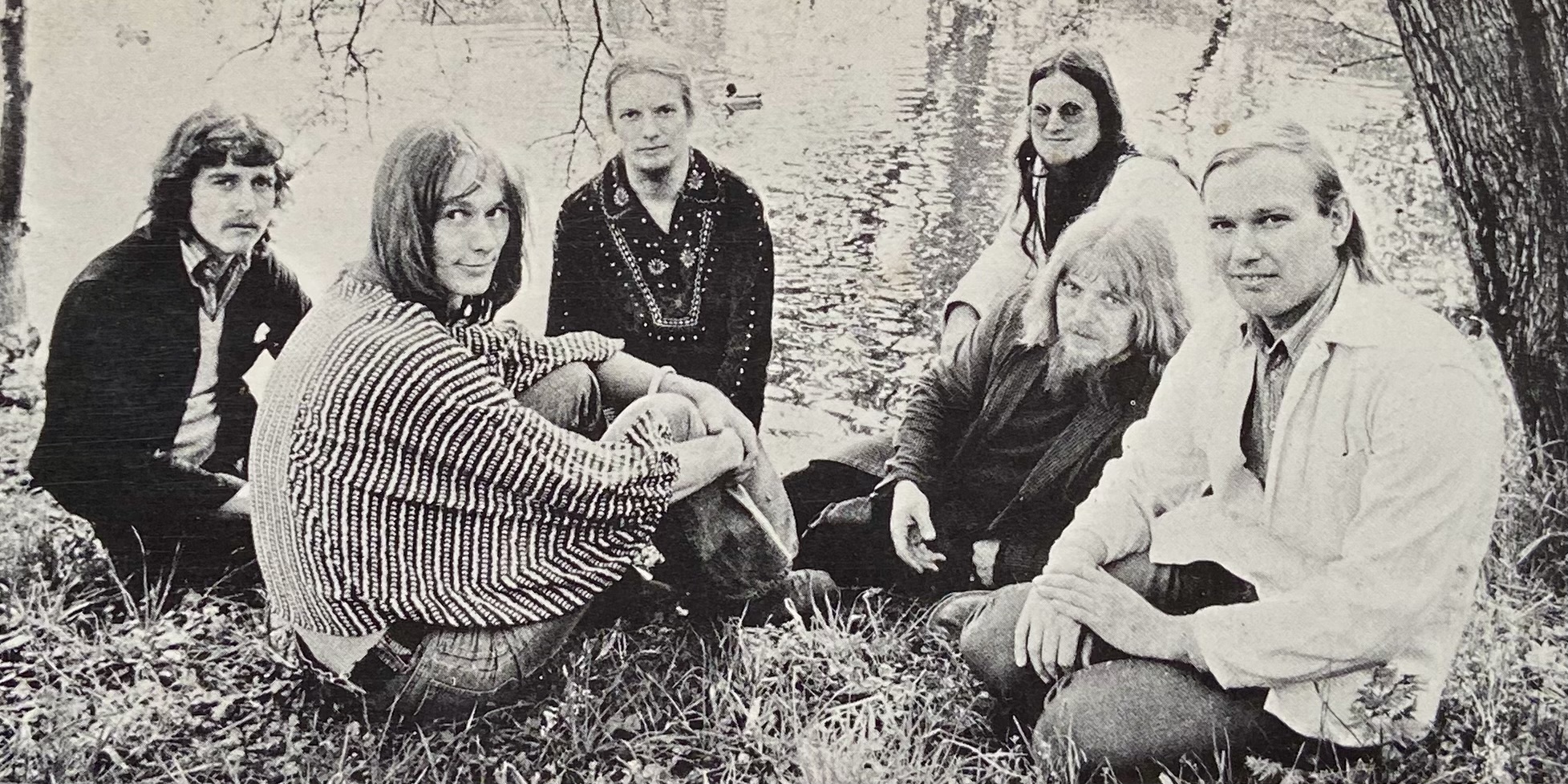



Bravo…..what a splendid interview.Very enjoyable and informative.Thank you.
Great to see as a young man and musician in Peer Frost making his way in that business visited and played Scotland in the mid 60s,i’d have loved to have heard more about that,and where did Les Rivals play in Scotland as i am born and bred in Edinburgh Scotland!!
Also the fascinating story of Jimmy Nicholl temporary drummer for a sick Ringo Starr of The Beatles would have been very interesting to hear concerning his playing with Peer and his colleagues,as he ended up in Mexico releasing an album and 45s there.Fascinating stuff!!
I’ve been an admirer of both Young Flowers albums since i bought the cd package issued by British label RPM,part of Cherry Red,which featured both albums,and some other bits n pieces.
I’m an enthusiast of psychedelia,and i think Young Flowers recorded some fabulous music that for me was indeed psychedelic,trippy & otherwordly.
WOW!!Peer Frost has had a very eclectic,long lasting career in music,and played on some out of this world records and recordings,in particular in those psych era years from 1967 into the early 70s.Phew!
Put those ALL together and it makes for an an energising,hazy,trippy,freaky,otherwordly and magical melange of brain expanding,soul soothing hours of enjoyment of some of the most “out there”musical explorations caught on tape,but with plenty of melody,excellent playing with magical songwriting & good studio sound and production!!With some beautiful artwork on their sleeves too…….did the groups have any input on their design?
Just look at that list of albums,it’s very impressive indeed,and thankfully some have been legitimately reissued on cd,but unfortunately there ARE bootlegs of those Midnight Sun albums on cd,which are NOT done well with gaps in between songs when they’re meant to melt into each other,typical shoddy stuff by the bootleggers!!
It’s why labels and artists should make their material,legitimately available on cd and indeed record if possible,for music enthusiasts,particularly the type of albums and groups like Peer has been part of,as they WILL be targeted by bootleggers,and indeed bought by music enthusiasts if that is the only way to have the album in physical form,as many of those albums ARE as rare as hens teeth,and musically ARE extraordinary and deserve to be heard by many more people of ALL ages,in the best possible sound and package with the blessing or indeed involvement of those who created and made the music,and who deserve to be paid for that pleasure!!
As unavailability DOES encourage piracey,bootlegging or non legit reissues,whatever one wants to call them, with inferior sound and indeed packaging and no financial rewards for the creators/owners of those magical recordings and albums.
As far as i know NO Midnight Sun albums have been reissued in the UK on cd or vinyl,which is unfortunate,as there’s maybe not a huge demand,but there IS a demand from enthusiasts like myself,who would rather buy a legit sourced cd than a poor bootlegged one,it maybe 50 years since those albums first appeared, but there IS indeed STILL interest in them and in Peer Frosts wider work in general.
Is there a website that Peer Frost may have where his music and music he was involved with in the multitude of albums he played on where those can be purchased on cd or indeed on record?
Finally after my overlong,meandering post/messsage, i just want to thank you for this splendid interview,as i am a regular reader of your site and interviews,though i don’t leave comments often,but this interview with Peer Frost,and because of the multitude of albums he helped create,i had to show my gratitude for HIS involvement and creation of some magical music that i indeed play on my cd system in Edinburgh,and to his colleagues,fellow musicians & studio staff involved with the multitude of groups he played with,to give us music that WILL last for eternity…….
much appreciated,
Stuart.
Dear Stuart, thank you so much for your kind words. They mean a lot to me, especially considering the effort it took to prepare this article.